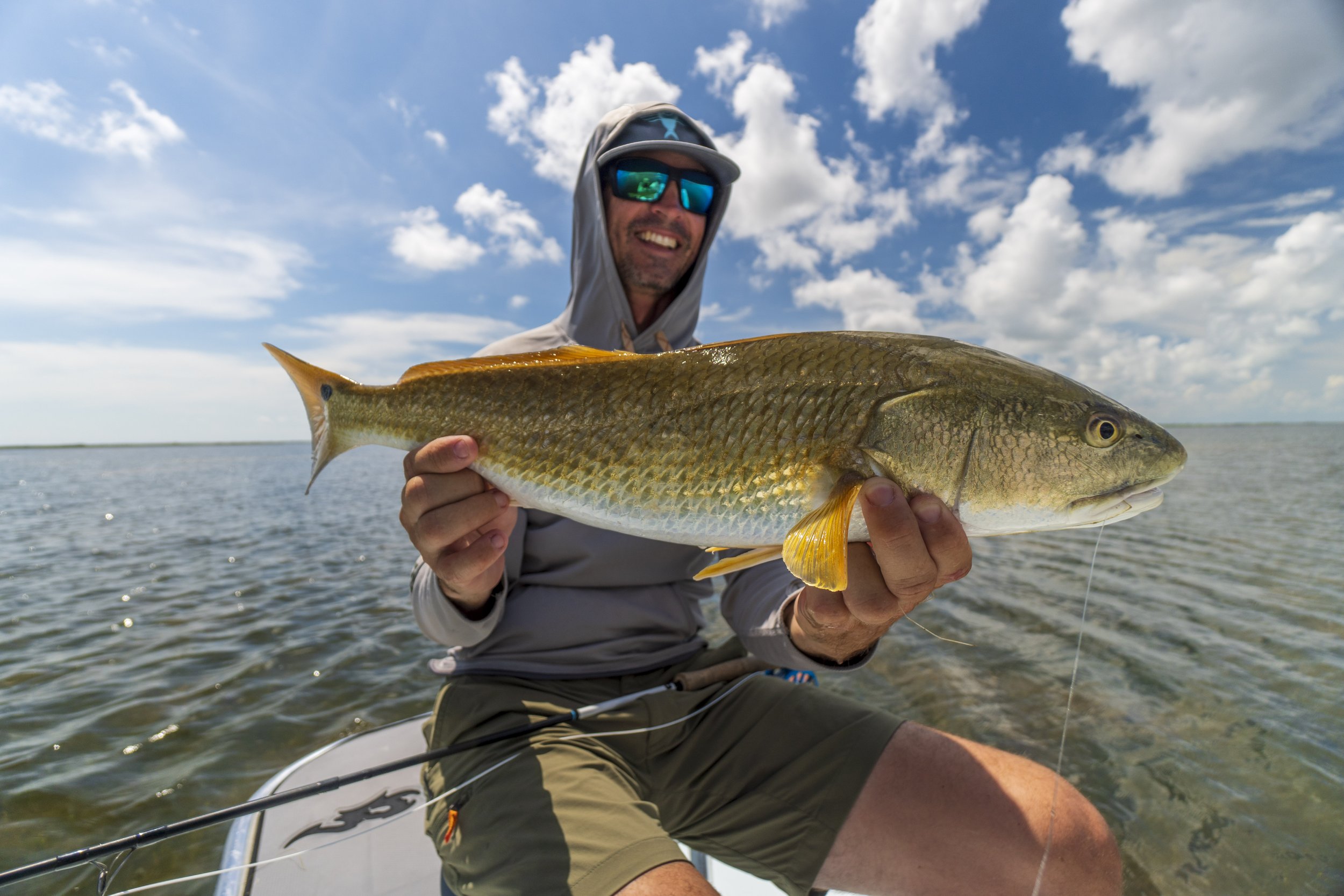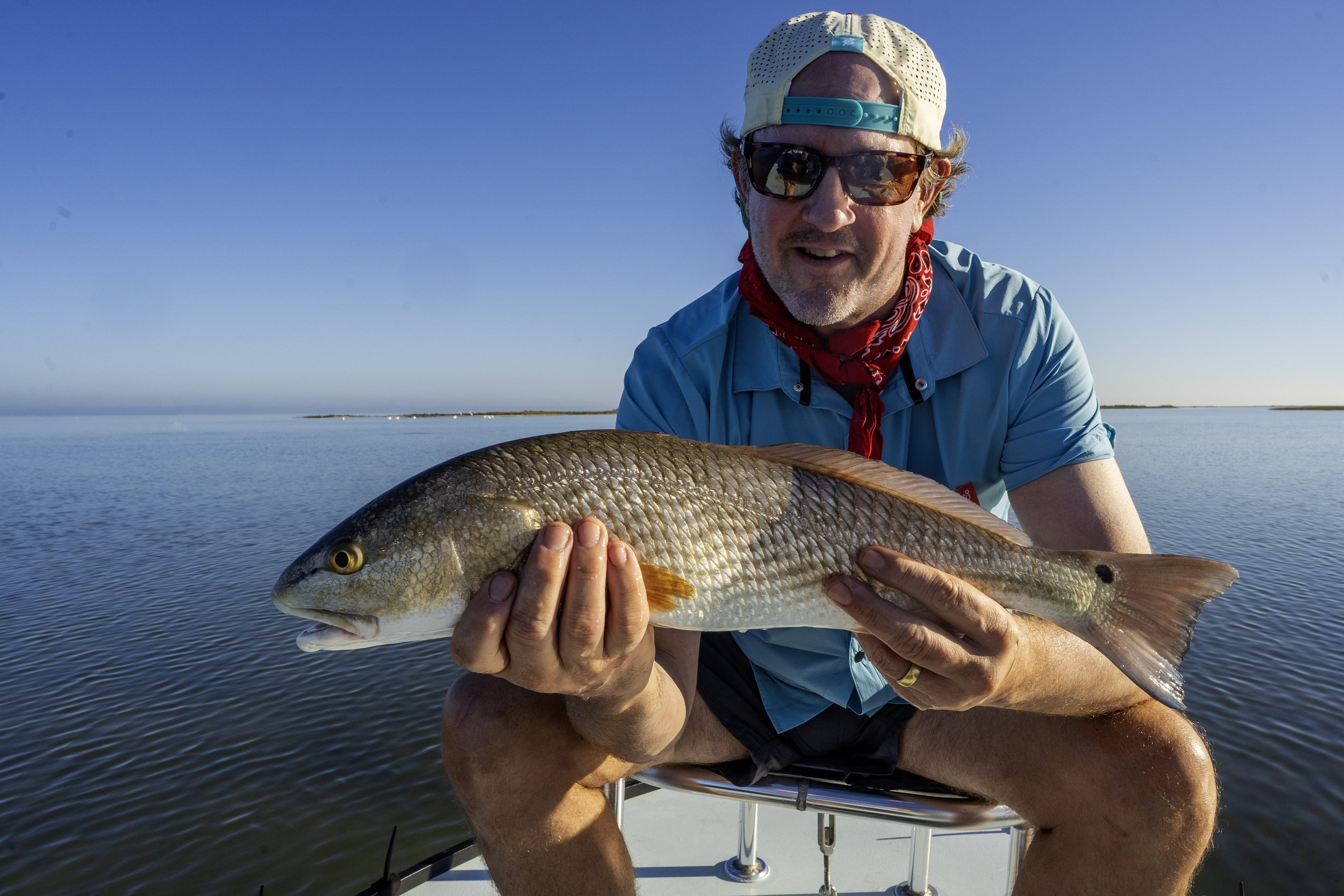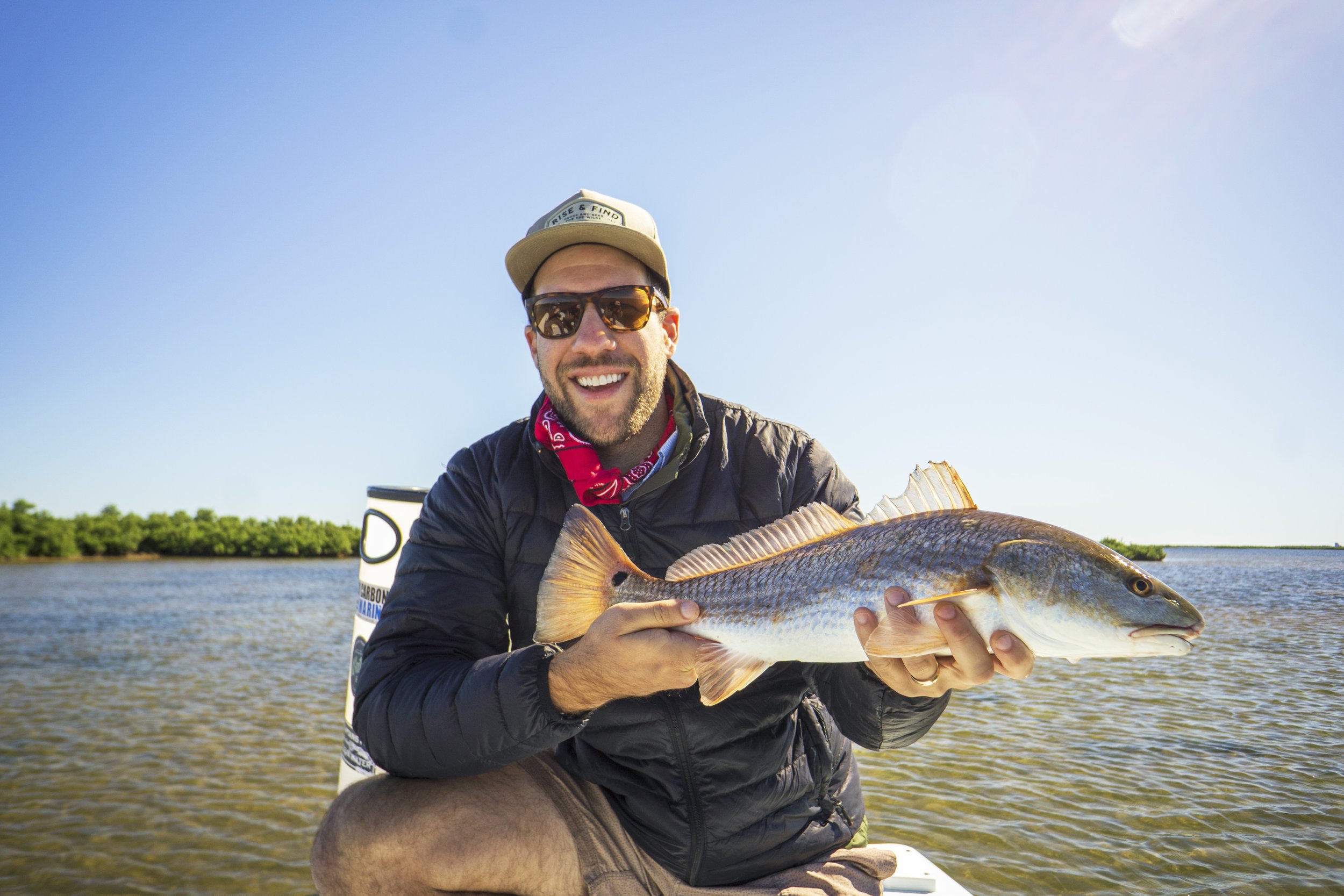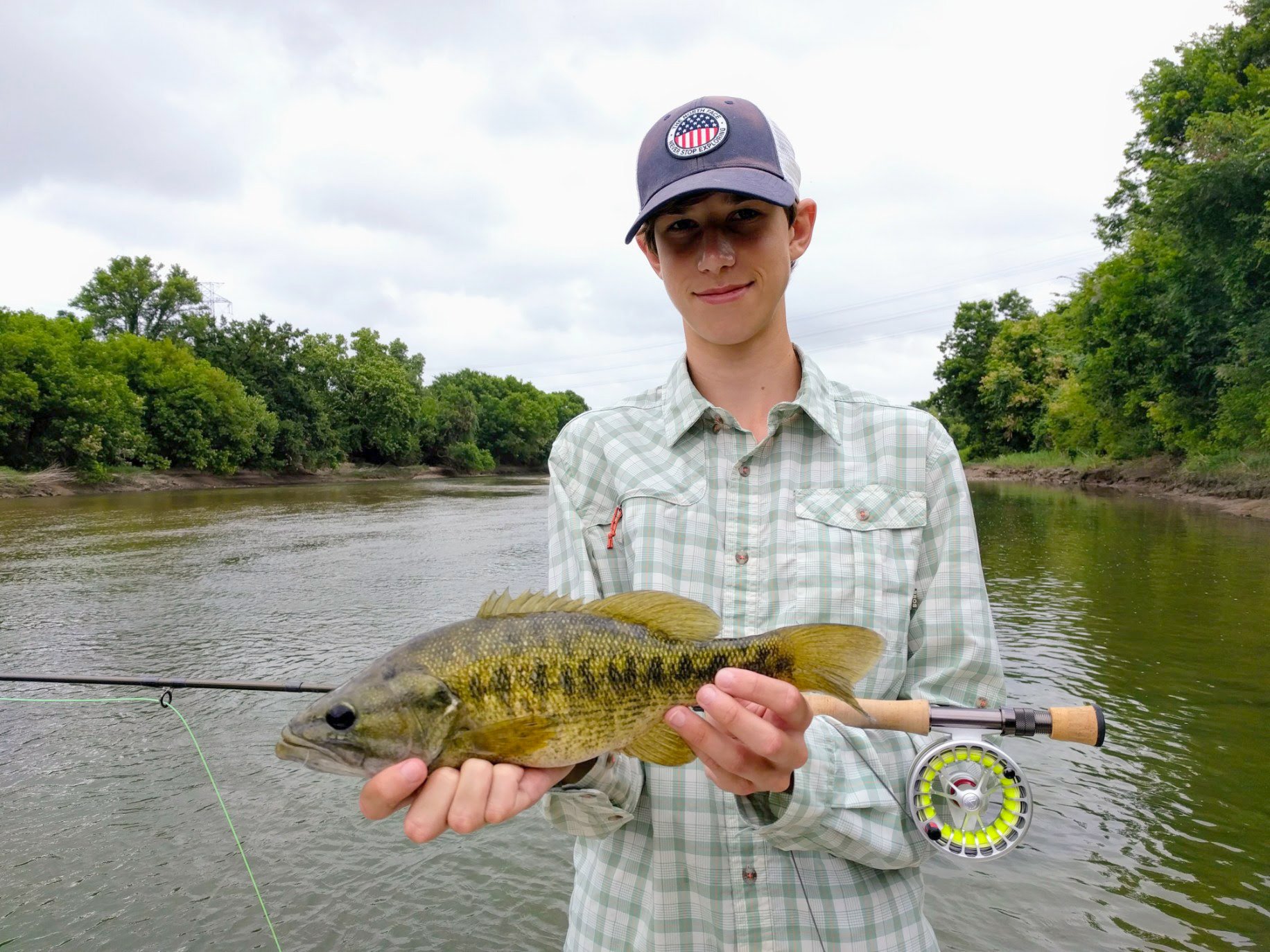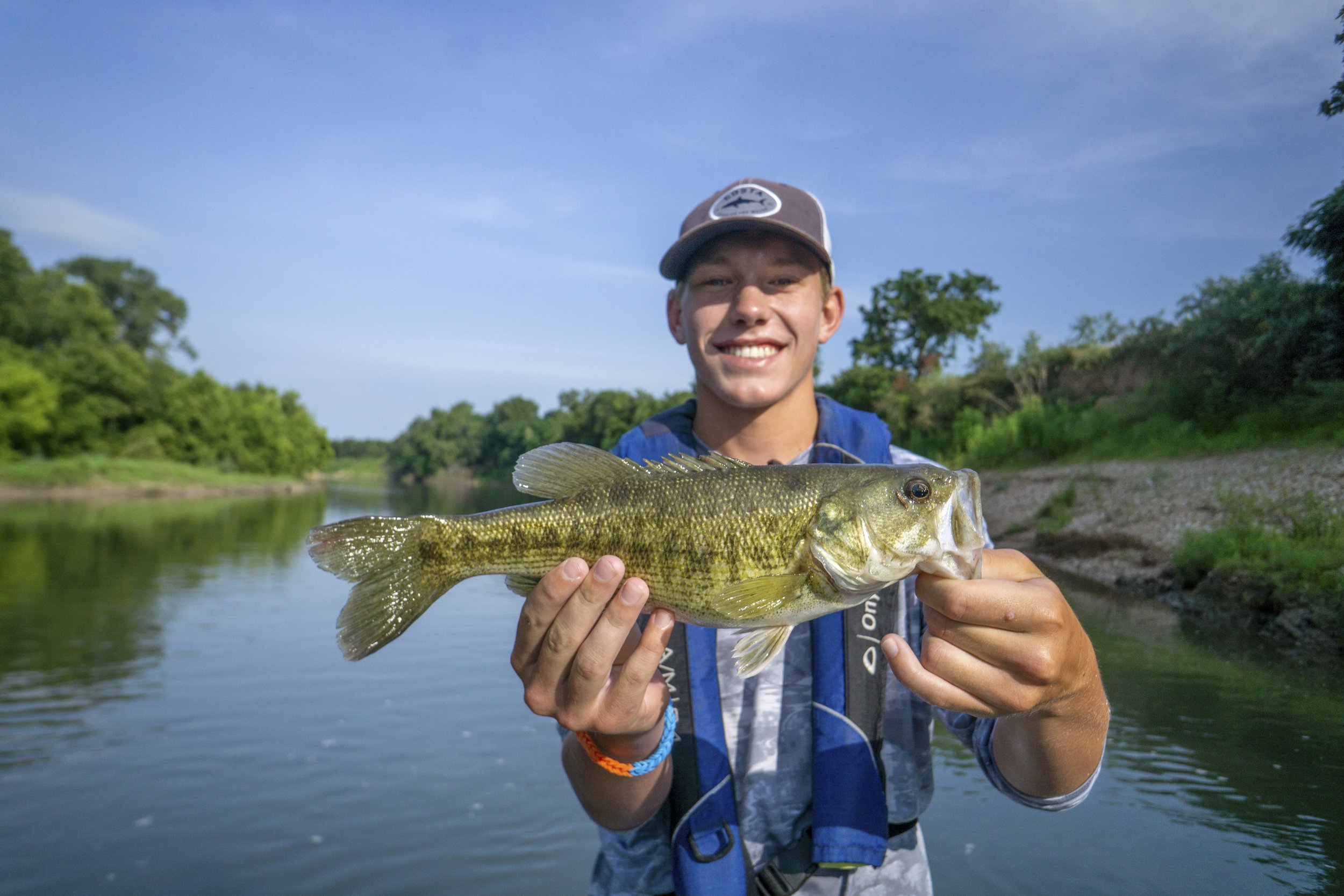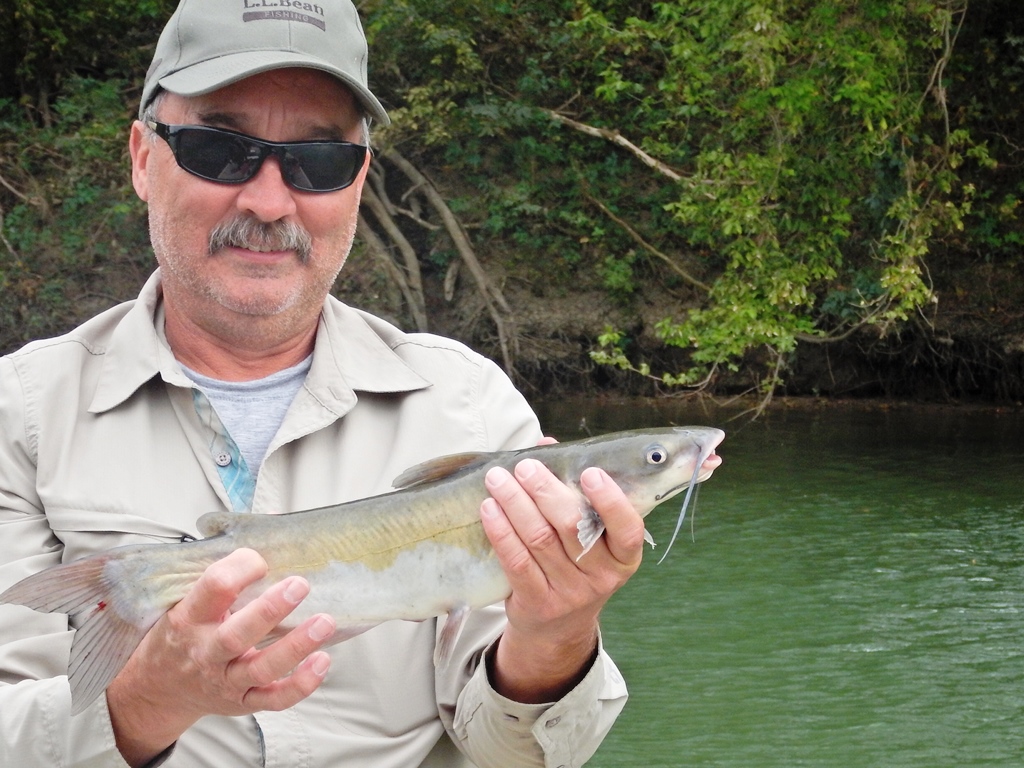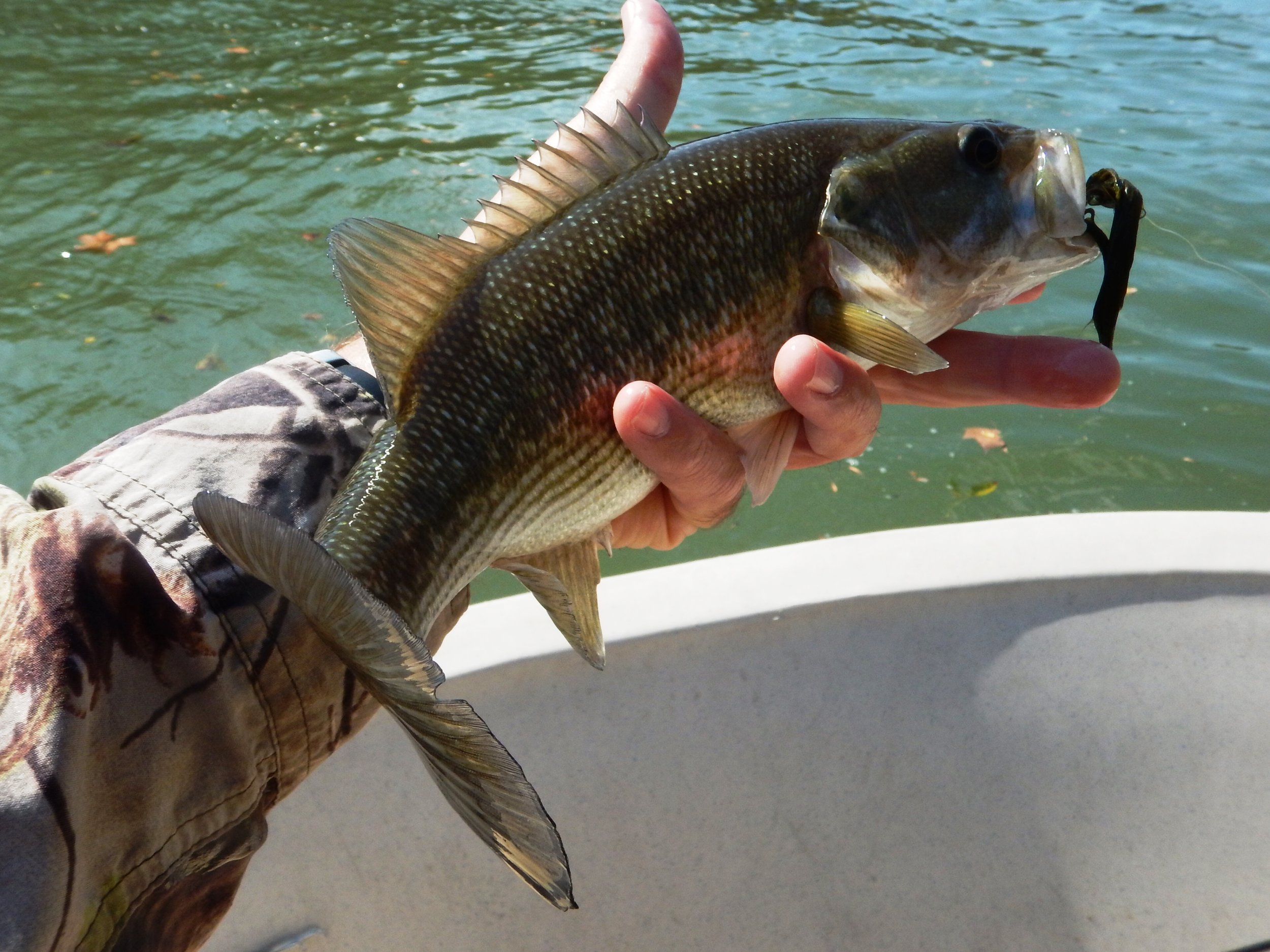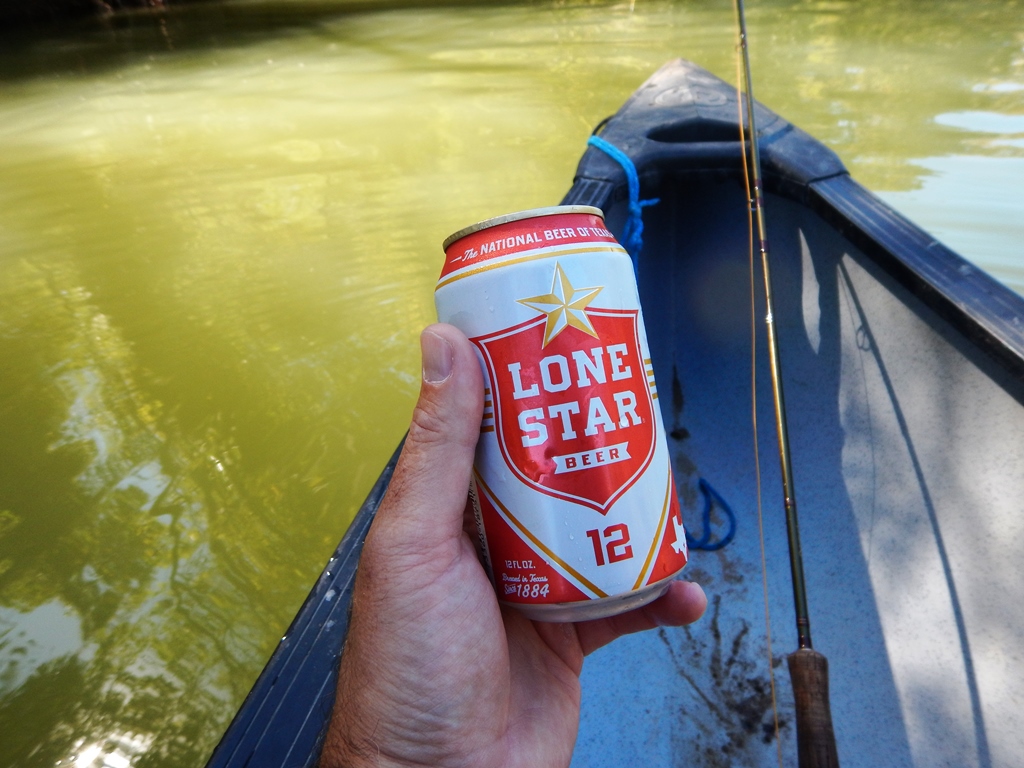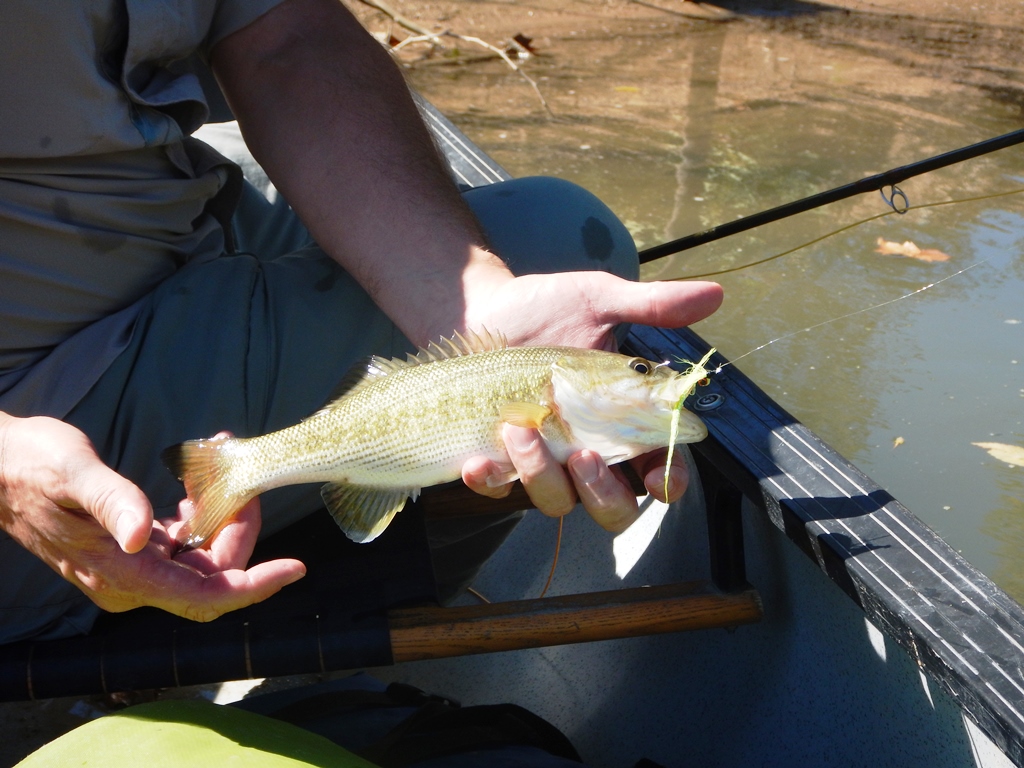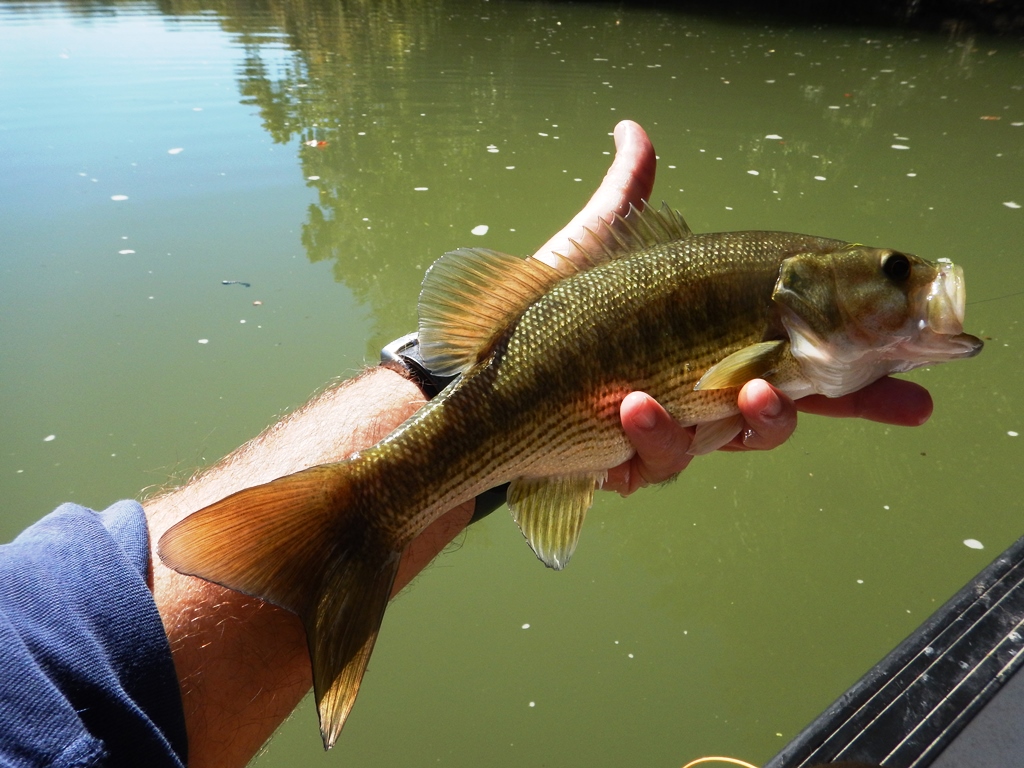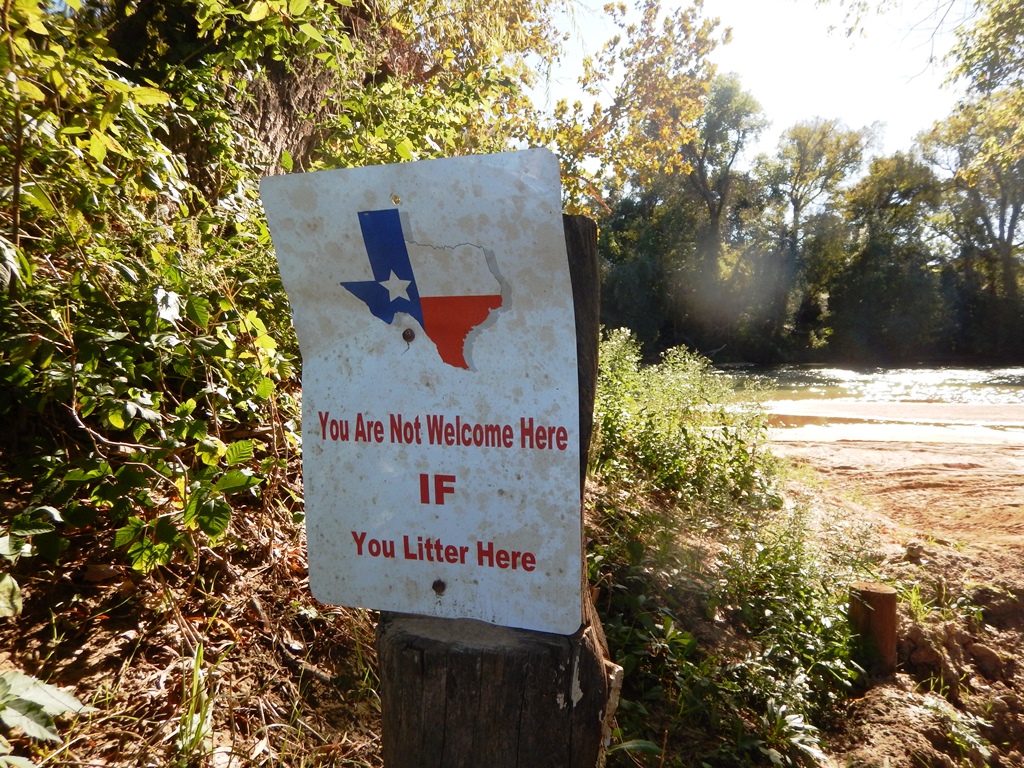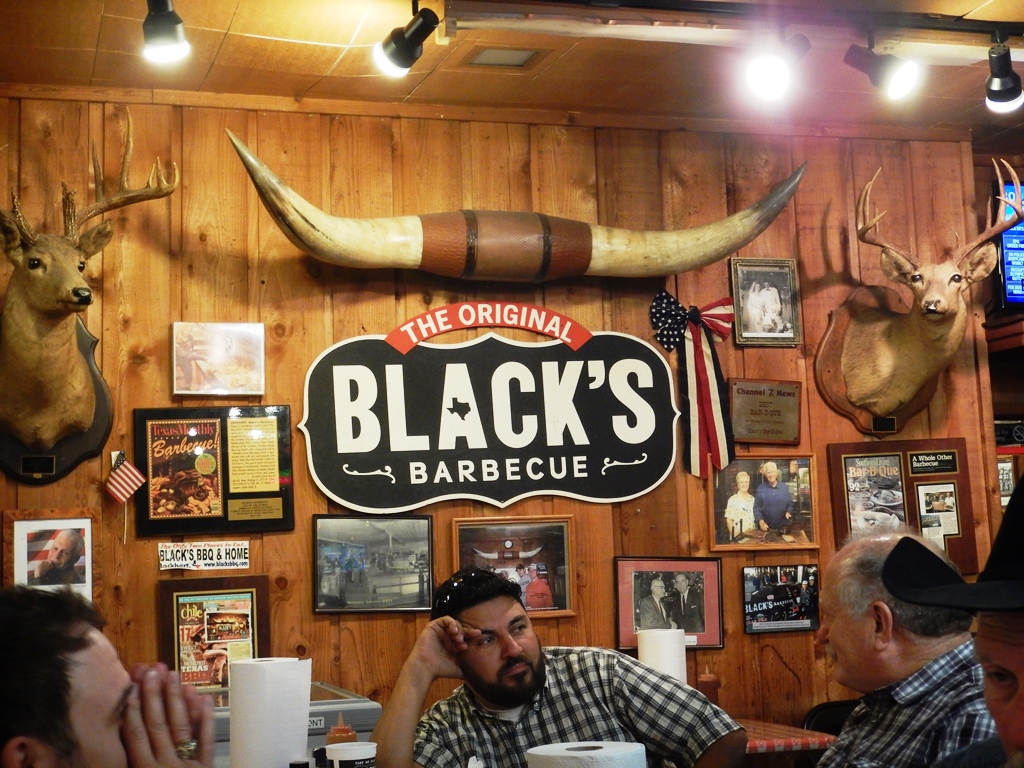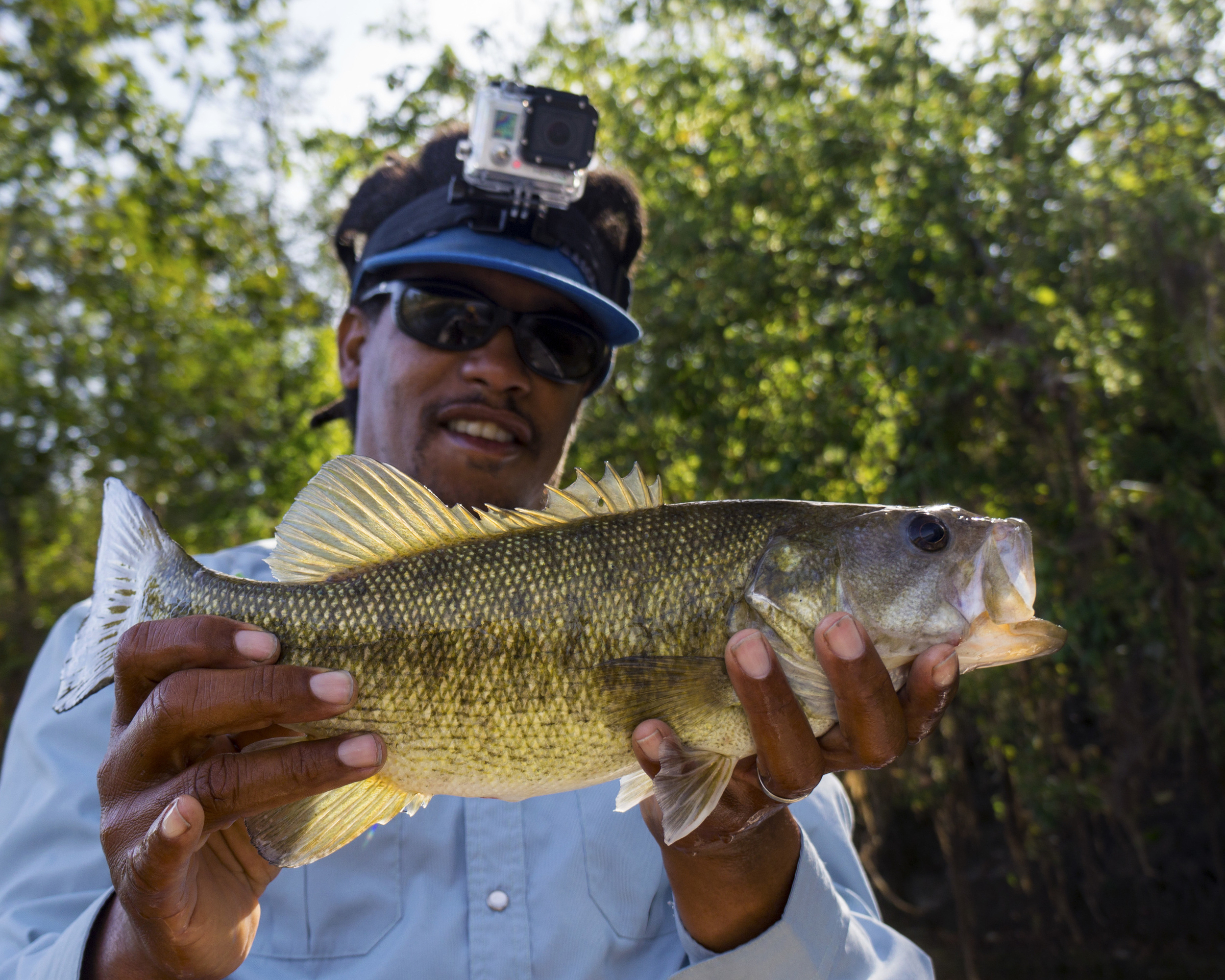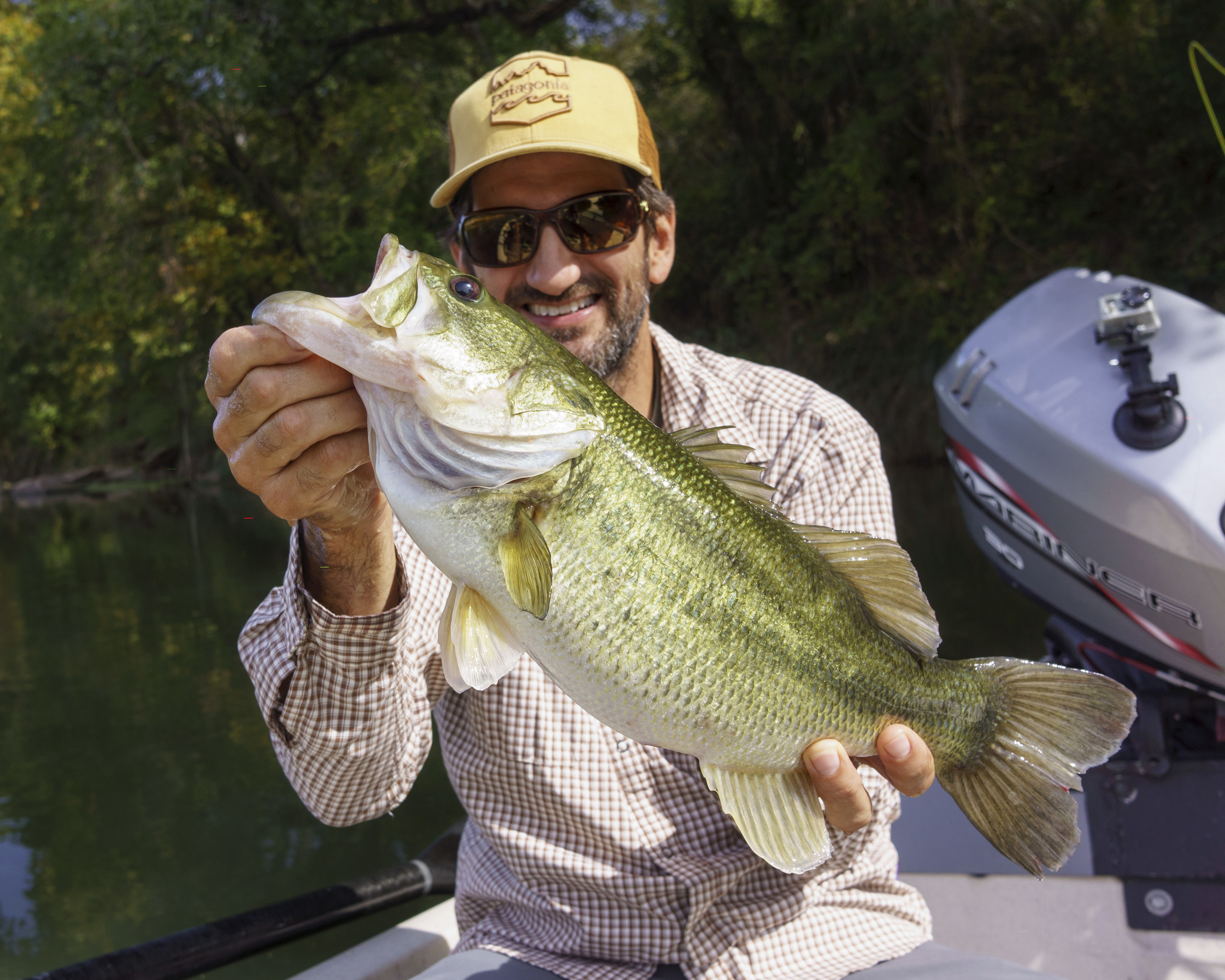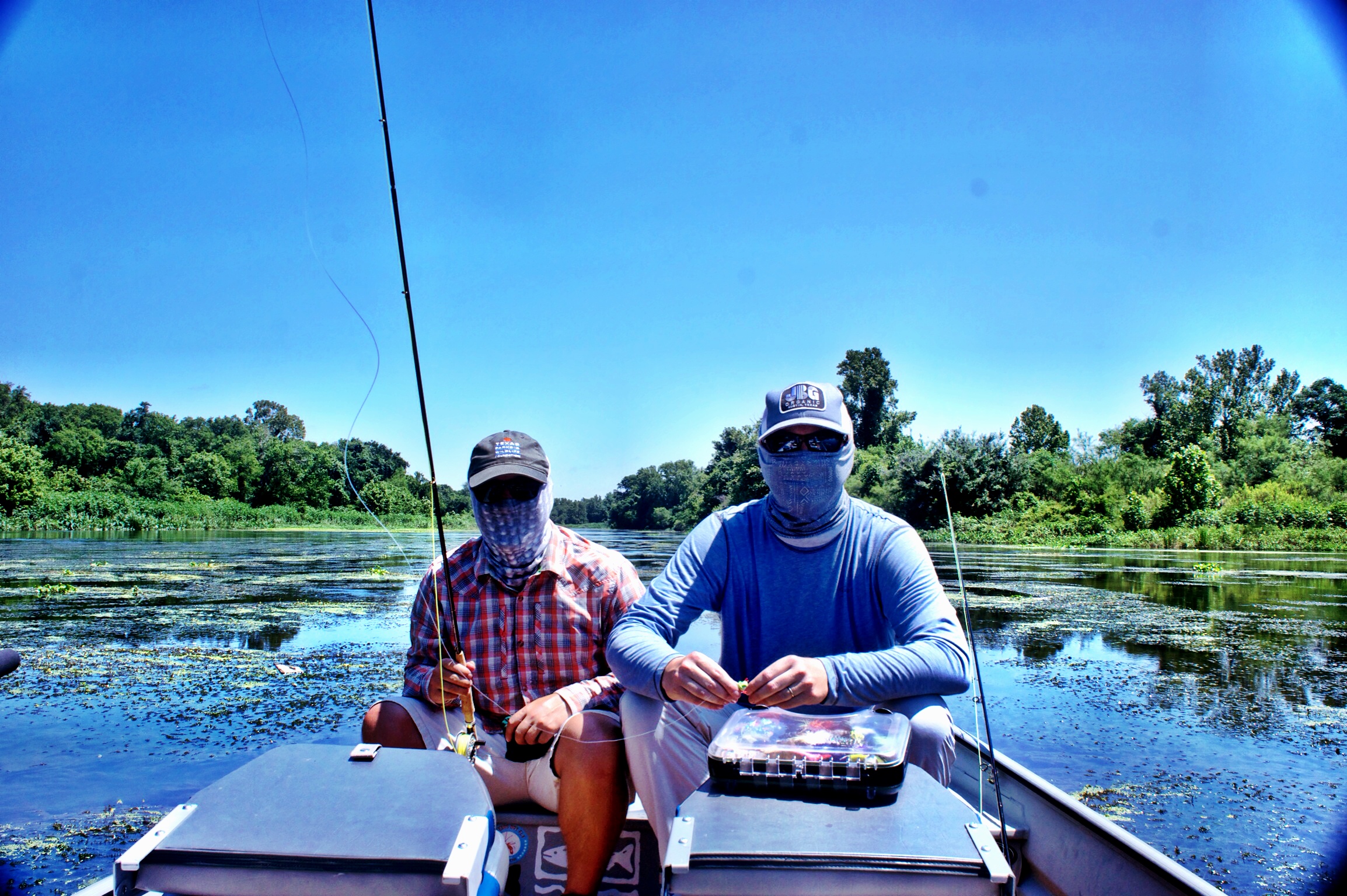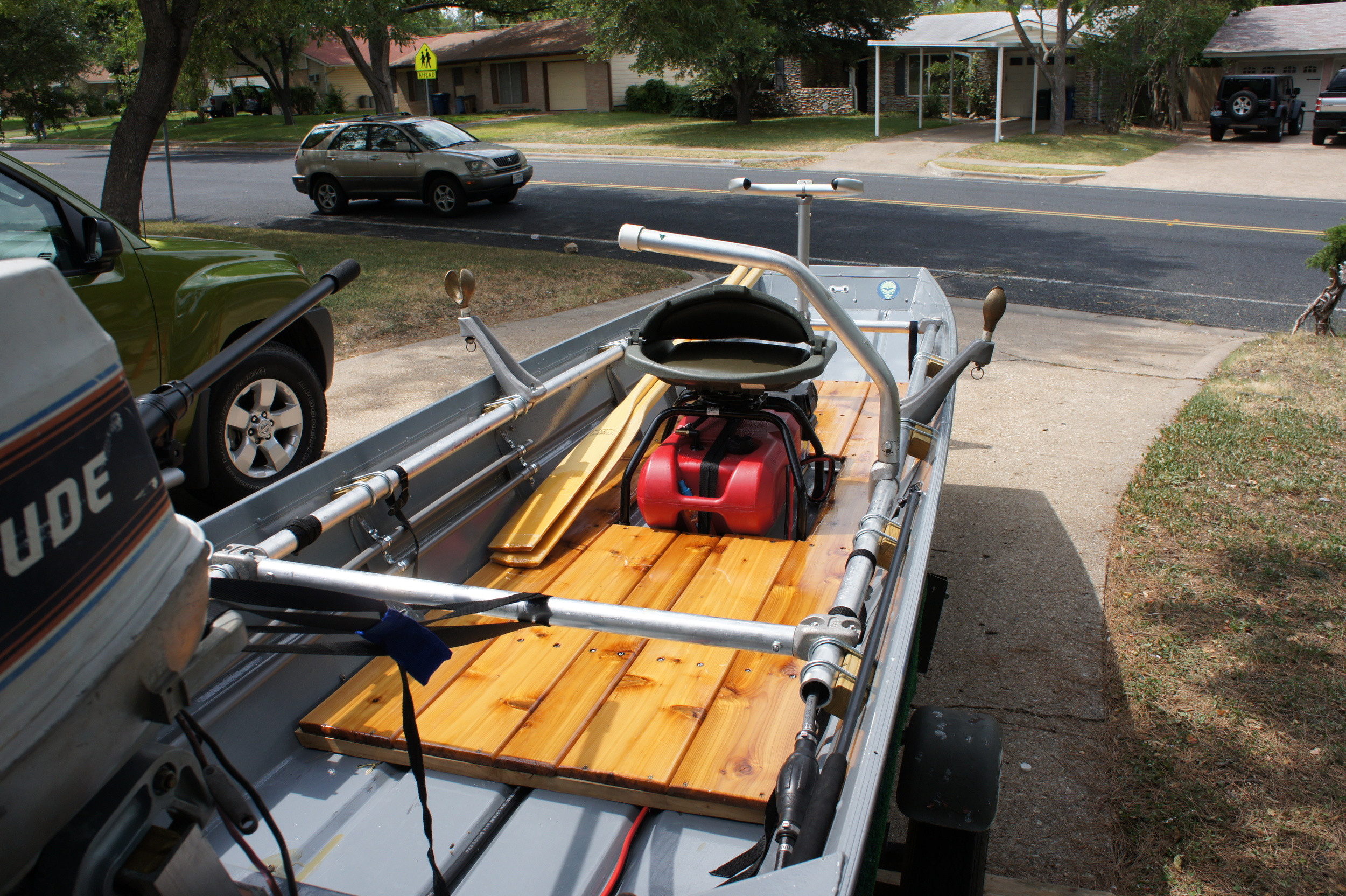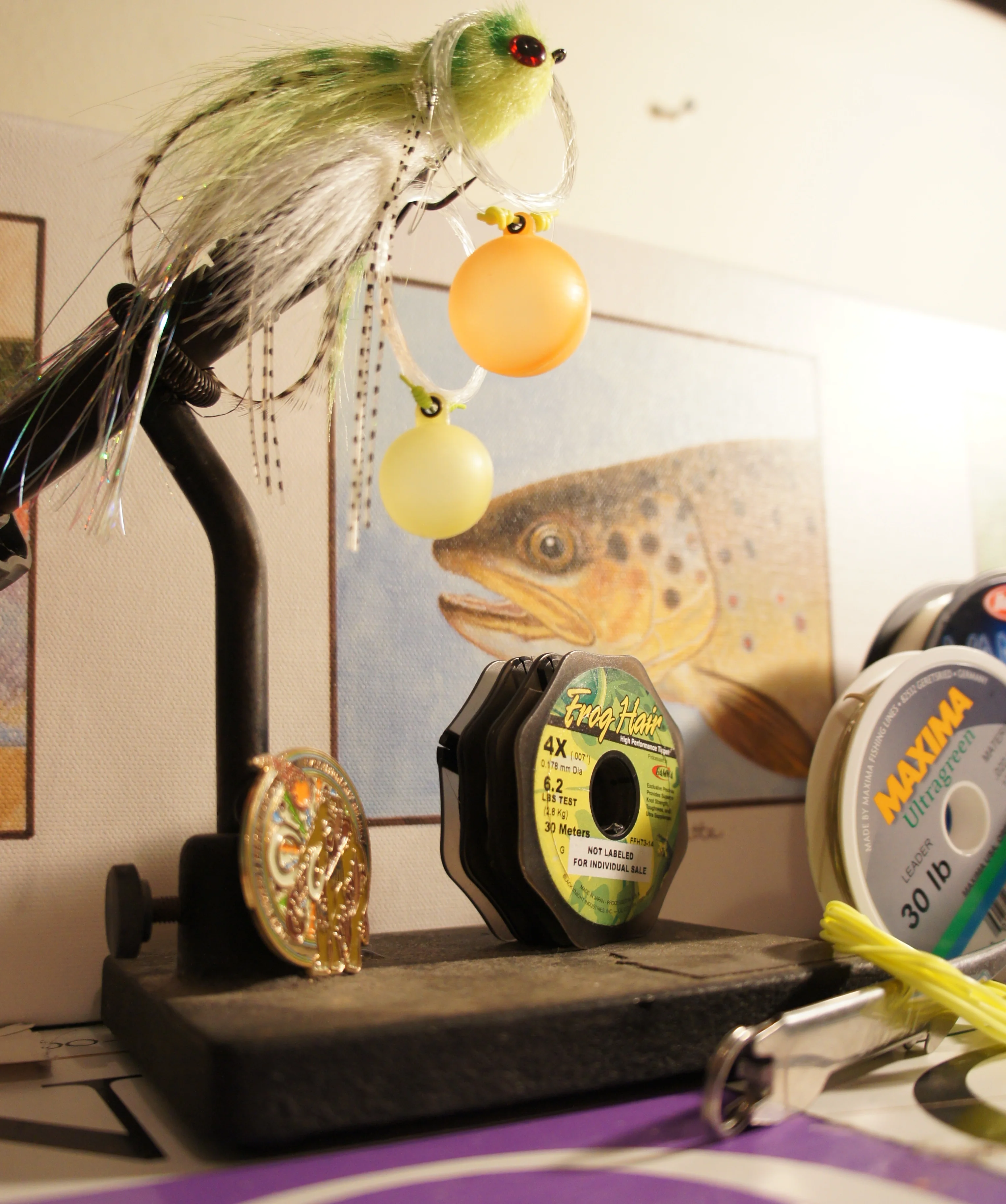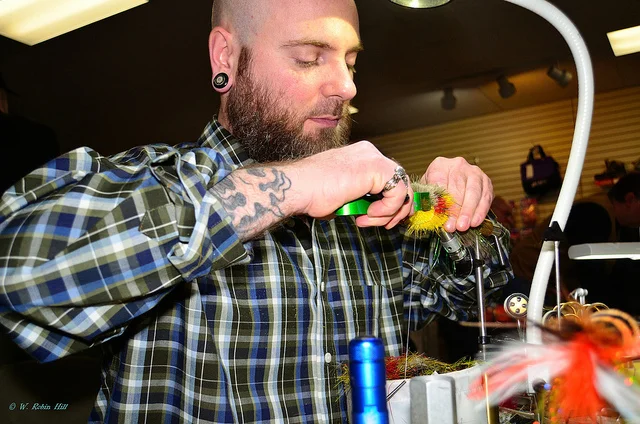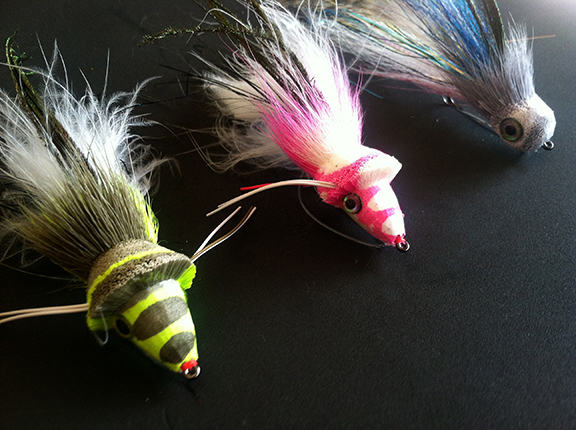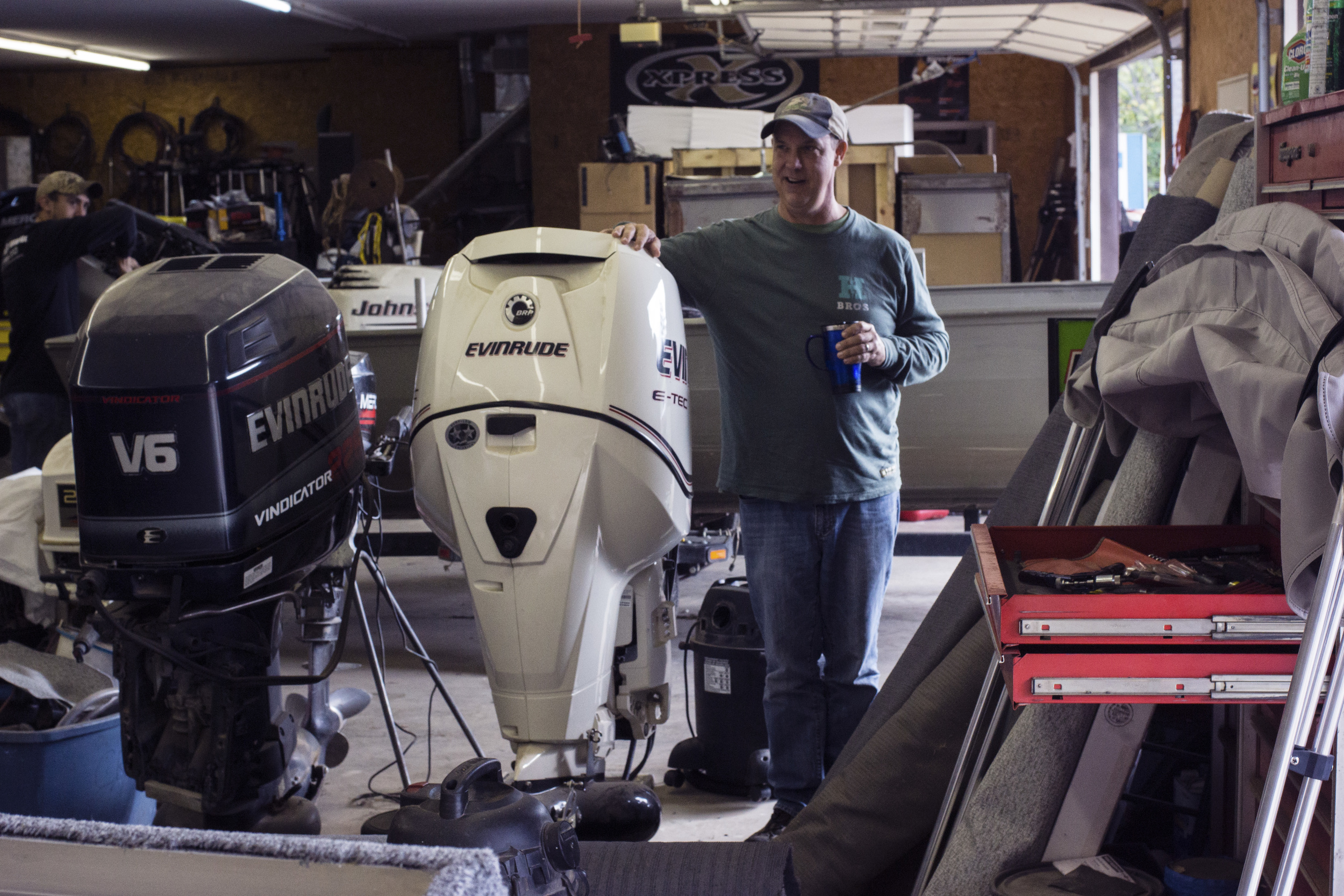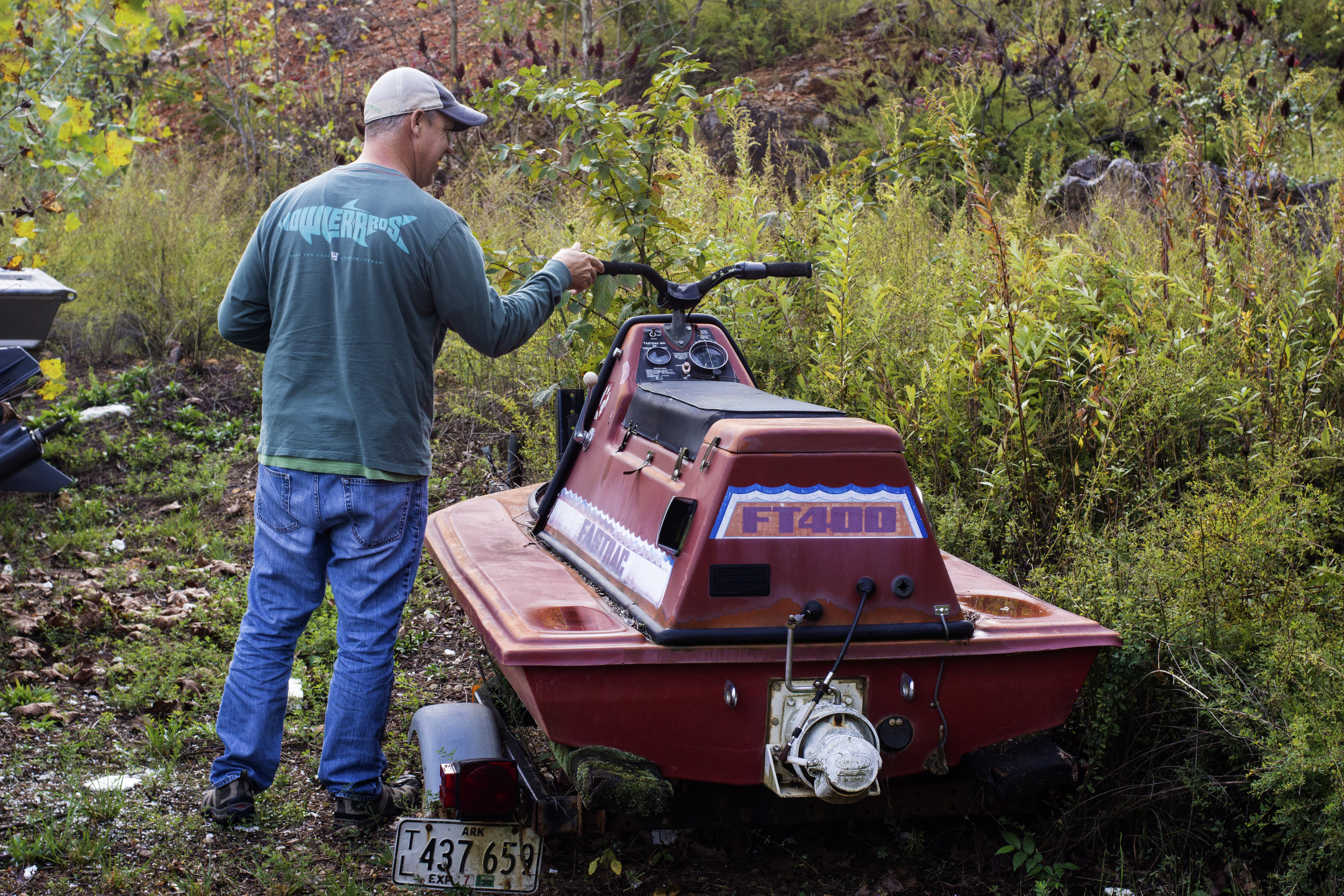Everything To Know About Leaders
Everything To Know About Leaders
Introduction to leaders: To make it really simple leaders are the monofilament attached to the end of a fly line, used for attaching flies.
Functions of leaders: There are many. They facilitate fly attachment, provide stealth by reducing splashing noise, and control energy transfer for gentle fly landings or turnover of bigger flies.
Types of leaders: Pre-tapered leaders come pre-packaged with loop-to-loop connections, while hand-tied leaders offer customization but require knot tying.
Components of leaders: They consist of a butt section (thickest), a tapered section, and a tippet (thinnest and replaceable part).
Specialty leaders: Include sinking line leaders for deep fishing, shock tippets for larger fish, and bite tippets for fish with sharp teeth.
Today, I'm going to tell you everything I know about leaders, Initially I was going to title the video everything you need to know about leaders, but I realized, I don't know everything there is to know about leaders, so I'm just going to tell you everything I know about leaders.
So what is a leader? I'm not talking about a president, a dictator, or a prime minister. I'm talking about the piece of monofilament that you attach to the end of your fly line that you tie your fly to. The piece of monofilament may be a single piece of monofilament, maybe multiple pieces of monofilament, maybe a thick piece, maybe a thin piece. We're going to get into all that.
So what does a leader do? Quite a few things, actually. Most people just think of it as a way to attach the fly to the end of your fly line. So the fly line is pretty thick. You can't really get the fly line through the eye of a hook and you need a leader to taper it down, so that is one thing a leader does that. The leader also provides some stealth. Obviously, the big thick fly line splashing down is much more likely to spook the fish than the thin monofilament. There's a couple of things that the leader can do or not do, depending on what type of fishing you're doing. So if you're doing something where you need a stealthy approach, you know trout, fishing fishing spooky fish on the flats, you need a fly to land nice and soft. Well, a leader's going to help you do that.
So what's happening as your fly line is rolling out. There's a little pocket of energy that's stored in the fly line, lots of physics we could go into, but I think that's a topic for another post. But basically, what's happening is that fly line is speeding up as it's moving away from you. And if you didn't have a leader on the end or if you had a short stout leader on the end fly line tends to kick and slap you fly down into the water. So think about it this way. The loop is like a baseball moving along at a certain velocity, actually speeding up, which is one of the crazy physics things about how the fly cast works. And then all of a sudden that baseball just smashes into the water. So that's what happens when you don't have a leader or if you have a short, stout leader. But imagine the baseball suddenly turned into a ping pong ball, which is what happens when that loop in the fly line hits that thinner diameter monofilament. So the longer and the thinner that leader is, the more of that energy gets spilled off as that loop hits the leader, so the more likely you fly is to land nice and gently.
Now the flip side of that is if you've got a big, bulky fly that is kind of pushing the limits of what your fly line can deliver. If you put a shorter and heavier leader on, it's going to transfer more of that energy and be more likely to turn that fly over. You know, it's going to land with a splash, but it's a big, bulky fly that is going to hit land with a splash, no matter what you do, but you just want to get that fly to turn over. So that's sort of the basic physics of the long, thin leader versus the short, heavy leader.
So short, heavy leaders turnover bigger flys transfer, more energy, and are more likely to make a splash. Long light leaders are going to spill more energy. The fly is going to land much more gently and with much more stealth. So that's two of the things kind of opposing things that your leader can do for you.
OK, so types of leaders, I just kind of lump them in two broad categories. One is a pre tapered leader that you buy that comes in a package. And then the other is a hand tied leader. So you've got multiple different diameters of material leader material that you tie together to make your own tapered leaders. They both have their pros and cons.
Obviously, the pre tapered leader is the easiest. You just take it out of the package, attach it to your fly line, put your fly on the other end and boom you're fishing. And most of your pre tapered leaders are going to have a loop. Most of your modern fly lines are going to have a loop, so you can make a loop to loop connection. Putting the fly on couldn't be any easier, right? OK, so there are some disadvantages, though, to the pre tapered leader. So you need a really specific leader for a specific type of fishing, and you may not be able to find a pre tapered one The tapered leaders are going to be more expensive.
If you buy a bunch of spools a tippet material and tie your own leaders, you can definitely save some money. And there's a lot more options if you're tying your own. You can make the taper however you want. You can put whatever size of tippet on. Whatever butt section you want, you can make whatever you want. Now the hand tied leaders have some cons as well. You know, one is the fact you have to spend the time learning, knots to put them together, and they're never going to be quite as smooth as a pre tapered leader. The other thing is, there's knots so knots may snag, knots may pick up weeds, that type of stuff. So there's pros and cons to both.
I use both. I use pre tapered leaders. I make hand tied leaders just depends what I'm doing. Personal preference is probably the most important factor when deciding what to do with your leaders.
OK, so the parts of your leader. I break them down in three basic parts. You have the butt section, you have the tapered section, and you have your tippett and this will be on hand tied leader or pre-tapered leader. Usually the butt section, that's the thickest part is going to be close to the diameter of your fly line. The Butt section is going to help transfer energy.
Then the taper section is exactly that. It goes from that thicker butt section down to a smaller diameter. There's all kinds of different formulas for tapers, both on pre tied leaders and hand tied leaders, and they have to do with how the energy is transferred. You know, you want a quick turnover, you want a slower turnover or a more stealthy turnover. It's almost as complicated as fly lines are. A lot of thought goes into it. Usually you grab one, you tie it on. It works, or it doesn't work. If you do your own tied leaders, it's something to think about. You know how quickly you go from that, butt section to the tippet section?
Now the tippet section is the end of the leader. So it's the part that is the minimum diameter for that leader. And it could be anywhere from one or two feet to six or eight feet, just depending on the application. The tippet is also the reusable part of the leader. It's one diameter, so you buy your tippet material and then you can rebuild that leader after you've changed flies a few times. Or if you want to, you can modify the leader. So if you have a 3x leader and you want to throw some small flies. You can put 3x, 4x or 5x tippet on that leader still get a pretty good knot, and still get a pretty good transition. And then your leader becomes much more versatile because you can change the tippet to suite the conditions and the leaders will last a lot longer. That is another one of the cons of the pre tapered leaders. They're going to be more expensive, so you want to have that tippet material so that you can rebuild those leaders while you're on the water and you're not going through a bunch of leaders every day.
Let's talk a little bit about specialty leaders. So leaders for sinking lines, leaders that have shock tippets, and leaders that have bite tippets. So for sinking lines, we typically use a much shorter leader. Having a longer leader sort of defeats the purpose of having a sinking line or sinking tip line. The line wants to sink because it's weighted, but the leader doesn't have any weight. So if you have a long leader is going to tend to kind of float up toward the surface or belly up toward the surface. Now that could be a bonus. You may have a situation where you want to suspend your fly above the bottom are above where that fly line is sinking, but typically you want to get your flies down. That's why you're using a sinking line, so a short, heavy leader is going to work better. Most of the time for sinking lines I tie my own leaders because not too many companies are selling three Foot Ox leaders, and that's basically what we use. A lot of the time even heavier. I do like to taper them with a butt section and a tippet. You can just go with a single piece of heavy mono for your sinking tip leaders.
Next up is leaders with bite tippets and shock tippets. A leader with a bite tippet will have a piece of wire somewhere between six inches, eight inches, maybe even a foot at the end. If you're fishing for some fish that has a lot of teeth, you like Barracuda, or Dorado, the wire will keep the fish from cutting you off when they grab the fly.
Shock tippets are usually some really heavy mono to prevent breakage due to abrasion. If a fish has a rough mouth or gill plates, think tarpon or snook. You don’t have to use wire because these fish don't have teeth, but you do want to avoid abrasion from rough gill plates. For these leaders you'll put 40, 60, 80 even 100 pound shock tippet on the end of your leader. You will still have the tippet, you know, the ten, 15, 20 pound tippet. But then on the end of the leader, you'll have that heavy mano to prevent abrasion.
OK, so we just kind of scratched the surface of the world of leaders with this post. You can get really deep into it like a lot of other aspects of fly fishing, and you can make it as simple or as complicated as you want. I kind of like to stay in that middle zone. You know, there are times when you do need to get some specific leaders, but a lot of times you'll be surprised at how far you can get with a couple of really basic leaders. I use the same leaders for Redfish that I use for bass. So there is no need to make this any harder than it absolutely has to be.
The Best Way To Buy Fly Fishing Gear
Go for the Ready-to-Go Set: Think about grabbing one of those ready-made kits from names like Orvis, Sage, or Redington, starting around $150. They're like all-in-one packages, making life easier and ensuring good quality.
Stick with the Pros: It's smarter to stick with the big names in fly fishing gear like Orvis or Sage rather than rolling the dice with a big box store. You'll thank yourself later for the better service and repairs.
All About the Rod for Freshwater: If you're hitting the freshwater scene, splurge more on a solid rod and a good line. The reel can take a backseat since freshwater's kinder on gear.
Corrosion Kills in Saltwater: When you're buying gear for the salt, the rod is still most important , but budget more for a corrosion resistant reel. A better drag and more backing will also help with bigger fish.
Shop Local, Fly Happy: It's worth paying a little extra at your neighborhood fly shop. They've got your back for support, warranties, and setting up your gear. Plus, it's way more personal than clicking "buy" online.
Alright, let's take a deeper dive into the art of purchasing fly fishing gear. It's a topic that often sparks a lot of questions, especially among newcomers to the sport. From what to buy to how much to spend, there's a lot to consider. So, let's break it down step by step.
Firstly, let's talk about the option of buying a complete outfit. These ready-made kits, typically including a rod, reel, and line, offer convenience and simplicity. Brands like Orvis, Sage, and Redington offer such packages starting at around $150. While this might seem like a chunk of change, it's often worth it for the quality and peace of mind they provide.
Now, when it comes to choosing brands, it's wise to opt for established names in the fly fishing world. Sure, you might find decent gear at big-box stores, but there's a risk of limited service and parts availability down the line. Stick with the reputable brands, and you're more likely to have support and spare parts available when needed.
If you prefer to customize your setup, you'll need to allocate your budget wisely. Start by determining your overall budget and whether you'll predominantly fish in freshwater or saltwater environments. For freshwater fishing, prioritize investing in a high-quality rod and line. While the reel is important, it's often less critical in freshwater fishing.
On the other hand, saltwater fishing demands gear that can withstand the harsh marine environment. Here, your focus should be on purchasing the best rod you can afford and a corrosion-resistant reel. The reel becomes more crucial in saltwater due to the potential for corrosion and the chance of hooking larger, stronger fish.
If you are fortunate enough to have a local fly shop, I would suggest buying your gear there. Nowadays prices are going to be the same as online, with the exception of local sales tax. The upside is that local fly shops offer invaluable support, including assistance with setup, repairs, and warranty issues. Plus, you're supporting local businesses and building relationships within the fly fishing community.
In conclusion, whether you opt for a complete outfit or build your own setup, investing in quality gear from reputable brands is key to enjoying a successful and enjoyable fly fishing experience. And remember, the support and expertise offered by local fly shops can make a world of difference in your angling journey. So, do your research, weigh your options, and happy fishing!
Texas Redfish on the Fly Like Nowhere Else
While redfish can be caught on the fly in many places, no place is quite like Texas. The Texas coast is home to the world's longest barrier island system and the resulting shallow bays provide and endless amount of shallow water to chase redfish on the fly.
When describing fly fishing for redfish in Texas we like to compare it to fly fishing for bonefish. Most of the time we are sight casting in super shallow water, sometimes just a few inches deep, often gin clear, to fish in the 20 to 30 inch range. Most fish are caught within 30 to 40 feet of the boat so you can see the fish chase your fly and eat it. Really exciting!
Redfish can be caught year round in Texas with the best times being summer and fall. Spring can be amazing as well once the winds calm down. Winter is an option as well weather permitting.
Sight casting to big fish in shallow water can be a bit of a challenge, but all our guides are professional, very patient, and willing to work with you to make it happen. All equipment can be provided at no additional cost. Book your redfish trip here.
Guadalupe Bass A True Texas Native
The Guadalupe bass (Micropterus treculii) holds the honor of being the official state fish of Texas. It is only found in Texas and is primarily found in the clear, fast-flowing streams and rivers of the Edwards Plateau region in central Texas.
Known for its aggressive nature and hard-fighting qualities, the Guadalupe bass is a favorite target for anglers, especially fly anglers. Its preference for fast-moving waters makes it an exciting catch for anglers skilled in navigating river currents and casting with a fly rod.
This species is part of the black bass family and is distinguishable by its olive-green coloration with dark blotches along its sides. While it shares similarities with other bass species like the largemouth and smallmouth bass, the Guadalupe bass has adapted specifically to the unique environmental conditions of the Texas Hill Country.
We target Guadalupe bass in most of their native waters and they are one of our favorite species to catch anywhere. We even had a client catch a world record Guadalupe bass on a guided trip a while back. Read about it here.
Guadalupe bass can be caught year round using a variety of tactics. Whether you like throwing streamers and hoppers or big noisy poppers during the warmer months, or crawling a crawfish pattern on a sink tip line during the winter. It all works for Guadalupe bass! We offer guided trips all skill levels. All equipment is provided. Book a trip here.
Fall 2021 Freshwater Fishing Report
As Central Texas natives know, this past summer was notable for a lack of the face-melting heat we have come to expect this time of the year. Relatively cooler temperatures and occasional pop-up rain events throughout the last couple of months staved off the fishing “doldrums”, which occur when a combination of persistent high pressure systems, clear skies, and high water temperatures results in lethargic, inactive bass and long, scorching days on the water.
In short, bass fishing has been good for this time of the year, and the next few weeks promise lower overnight temperatures, rain, and cloud cover - all of which should begin our run into Fall and some of the best fishing of the year!
Colorado River
The Lower Colorado River below Austin has seen high flows all summer, and with those flows has come dirty water, small-but-active Guadalupe Bass, and some big Largemouth and Longnose Gar. In addition, a regrowth of river grass has lead to an increase in sunfish populations, which bodes well for our gamefish over the long term. While the off-color water has cut back on the total number of fish landed some days, it has also lead to a fair number of large fish landed in less-than-ideal conditions. Looking forward, the Fall is usually marked by reduced releases from Longhorn Dam. Once flows have dropped, the water lower in the system should clear out and allow for jet boat and raft trips on the 40+ miles of productive water below our beloved capital city. As the water cools and clears, White Bass, Crappie, Freshwater Drum, and Smallmouth Buffalo will be in play, along with the usual summer residents. The LoCo in the Fall is a true grab-bag of diverse species and techniques, and presents some of the most unique fishing opportunities of the year.
San Marcos River
The San Marcos River fished well throughout the summer, with Guadalupe Bass, Sunfish, and Largemouth making up the majority of fish landed, along with the occasional Longnose Gar and Catfish (sometimes on poppers - it’s true!). Early starts have been the key to success. Water levels have remained at fishable levels, with the upper section staying clear and the lower sections retaining that famous San Marcos green. Wildlife sightings have been above-average this year, with river otters spotted much further upriver than usual - a good sign that the river is supporting healthy populations of fish and other forage. As temperatures drop, recreational tubing traffic will crawl to a stop, and mid-day trips on the upper sections will be possible once again. Once Winter sets in, though, the San Marcos tends to fish very slowly, so Fall is your best bet to wet a line on one of our area’s most scenic rivers. Towering Cypress trees and clear water in the low, warm light of Fall is the perfect antidote to whatever is ailing you - guaranteed.
Guadalupe River
The Upper and Lower sections of the Guadalupe River both enjoyed brief, but productive float seasons this year. When rains raised water levels high enough for raft trips, the Upper Guad fished well, with high numbers of Guadalupe Bass, Largemouth, and Sunfish caught, many on poppers. The Lower Guad also fished well below the recreational tubing sections, with Guadalupe Bass and large Longnose Gar in the mix. That being said, most angler’s attention will turn to the Lower Guad below Canyon Dam in just a short time as our highly-anticipated trout season kicks into gear. Rainbow and Brown Trout will be stocked sometime in November, and any rain that fills Canyon Lake between now and then will help water levels remain high enough to support a successful season. Our trout boxes are stocked and our rafts are at the ready to get you out on the river in style. Additionally, we have a large selection of waders and wading boots available for those not wishing to provide their own. On a related note, if you haven’t already, consider joining or volunteering with GRTU (www.grtu.org) to help them in their important work managing the southernmost Blue Ribbon trout river in the country. When it comes to Trout Season on the Guadalupe, it’s all hands on deck.
Points West
The far-flung rivers of West Texas remained low most of the Summer, but the Llano River did provide a short period of floatable water, and the Pedernales River was host to some good wade fishing as conditions allowed. The Llano produced high-number days of Guadalupe bass alongside some of the most beautiful scenery in our area, and the Pedernales was Common Carp Central, with some nice specimens landed on foot after careful stalking and delicate presentations. With one well-placed Fall storm, these rivers can come into form once again in a heartbeat. Anglers willing to spend a little time behind the wheel or stomping around on foot will be rewarded with views of rugged cliffs, native grasses, and hard gravel bottoms not found elsewhere in the state. Our rivers out West create a kind of beauty inseparable from this relatively inhospitable region, and, once you’ve witnessed it, as the saying goes, the fish are just a bonus.
Texas on the Fly (Day 4 of 4) …….. Guest Post by Tony Wheeler
Day 4 started back under the Utley Bridge. It was beautiful morning, no wind and a stable air mass. It is a nippy 39 oF, but the sun is warming things up quick. Everyone’s expectations for the day were high.
This time we did the 15 mile downstream run to the fisherman’s access in Bastrop.
While Okey and Alvin set our shuttle I get to hang out in the boat and sip my coffee, while watching the sunrise, and the baitfish nipping at midges. Across the river a whole pack of coyotes were announcing their shift change. Say what you want I think coyotes are cool.
When we finally get started I tag a nice largemouth right away. Okey follows up with a really nice Guadalupe. Then despite what the weatherman promised the pressure changed again and the breeze turns into another blow, and the freaking bass bite shuts off again.
We worked hard for every bass that we boated.
In the afternoon yet again I hook another unknown, unseen sea monster. The creature clamps down on my crawfish pattern, and then ran like heck to the bushes. This time I was prepared with 0X tippet and triple checked knots. I palm my reel trying to slow this beast down, and this time the hook just popped out.
Let me tell you boys’ and girls’ sea monsters do exist and they live in the Colorado River in Texas.
So I guess in summary over 4 days of fishing in 3 different water crafts, we made a whole lot of fly casts, battling 4 days of bass unfriendly high pressure systems Despite which we still caught some bass – smallmouth, largemouth, and their native Guadalupe.
We saw some incredible river scenery which is a lot different than what we have but still sort of familiar. There was a lot of wildlife -- deer, fox squirrels, red tailed hawks, ospreys, bald eagles, herons, egrets, and a lot of other water fowl. Oh and there were turtles too, tens of thousands of turtles.
And we ate some great BBQ, (a whole lot of BBQ.)
If you like to fish for smallmouth bass you will absolutely go nuts over Guadalupe’s. They don’t get very big but they are a flowing water river bass similar in body shape and attitude to our smallmouth, except with a different paint job. It might be blasphemy to say but I think they fight harder too.
In fact Guads are so close to smallmouth they will naturally hybridize, and the introduced non-native smallmouth bass genes are dominate. A while back it was pretty much thought that the Guadalupe’s were on their way to being lost. Texans feel the same way about their Guadalupe’s as we do about our native brook trout. The State of Texas has done a good job bringing Guadalupe’s back from the brink.
What is even crazier still is that that the largemouth bass are native too. Largemouth and Guads evolved to share the river, and they don’t hybridize. Figure that one out?
When it comes right down to it the rivers in the Texas Hill Country offer some great bass fishing from little spring creeks to the much bigger Colorado River. Throw in some striped bass, white bass, and a host of other strange warm water critters that will eat your fly and Austin is quite the warm water fly-fishing destination.
Compared to West Virginia standards, Austin is a really big city that is still rapidly growing with prosperity. Everybody wants to live there.
It has this funky mixture of cowboys and hipsters. There is something going on music wise every single night of the year.
Their traffic is horrendous, with the most courteous drivers I have ever seen.
Everyone must run their own BBQ, as you smell intoxicating hardwood smoke and grilling meat everywhere you go. I think BBQ must fuel the soul of Austin.
Their catch phrase, “Keep Austin Weird” is kind of true.
I saw two guys dressed as super heroes riding their bicycles covered in white twinkling lights through the traffic on South Congress Street. Now that might have had something to do with being close to Halloween, then again it might have been their regular commute to work outfits.
Yeah Austin is sort of like that. And I kind of want to go back….
Texas on the Fly (Day 3 of 4)… Guest Post by Tony Wheeler
Today we are back on the Colorado River fishing with Alvin Dedeaux with All Water Guides.
We start at the Utley Bridge about 25 minutes downstream of Austin on the highway FM-969. We jet upstream in Austin’s cool Hog Island Boat Works river boat that is half jet boat and half drift boat. Up on plane it skips over some low water riffles that are barley wet.
After a quick upstream run of 7 miles, it turns into a drift boat and we start back down the river. For once the put-in and the take-out are truly one and the same.
A high pressure bass unfriendly cold front with winds gusting to 30 mph has arrived. Alvin warns us our chances are grim.
Right near the start some unknown unseen river monster grabs Okey’s crawfish on Alvin’s 7 weight and it bends the rod to the cork. The creature streaks away diving for a brush pile. I dig for my camera in the dry-bag and as soon I find it the monster breaks off. Once again I sure hope that wasn’t a bass.
With the cold temps and howling wind the bite is slow. We both are getting them on streamers and crawfish patterns – beautifully marked Gauds and their largemouth river cousins. The hot fly for me was a C.K. Baitfish, a fly those Texas bass had never seen before. Okey stays consistent on the crawfish pattern.
We all fight the wind (especially poor Alvin on the oars) but our numbers start to climb. Soon we have exceeded the total of the last two previous days.
For variety Okey hooks and then loses a big gar. Then a few cast later he lands a catfish on the fly (a first for him.)
Much to the protest of my elbow I throw a sink tip fly line on my 8 weight all day. Later back in our rented Airbnb apartment in Austin I thought my elbow was going to just dislocate when I popped off my elbow brace.
I have known and done outdoor adventure trips with Okey for over 30 years now. No amount of coaxing could convince him to massage my shoulders and elbow while I soaked in a hot bubble bath.
I had to settle for a handful of Advil and shot of Tequila.
Texas on the Fly (Day 2 of 4)….. Guest Post by Tony Wheeler
Day 2 dawns with Okey and I on the San Marcos River about 45 minutes South of Austin. The San Marcos is one of the most beautiful and mysterious river I have ever been on. It is born several miles upstream of our put-in all at once from a giant spring in the town of San Marcos. Its water is the color of turquoise. It is a small meandering little river lined with big Cyprus and Pecan trees. It is choked with woody debris.
We are fishing with Judson Cole (Hell ‘N Back Outfitters). Judson’s raft is a nicely outfitted bright lime green Super Puma. It is narrow and perfect for the smaller San Marcos. I must admit I got a little bit of boat envy. That narrow boat would be perfect for the Top Gauley or the Down Elk.
Judson insisted I leave my fly rods in the car and we fish his Echo six weights that were really perfect for the nature of the San Macros. The bad case of tendonitis in my casting elbow did not object to the lighter rod.
We are into fish immediately right at the put-in.
Within 30 minutes Okey and I boat a smallmouth bass, a largemouth bass, a Guadalupe bass, and a smallmouth-Guad hybrid. In addition we are into smallish sunfish continuously.
Before 11:00 a.m. I feel a breeze on the back of my neck and I can literally feel the barometric pressure change.
“Ruh-roh Shaggy”
Sure enough the breeze turns into a blow and we never catch another fish the rest of the day.
Trout on the fly are push overs. I can catch trout under the worse conditions. Not so for bass on the fly. They are moody and sensitive to change.
We have a nice river side sandwich lunch complete with comfy camp chairs, a folding table, and Halloween Cookies. I provide the ice cold Lone Stars.
We finish early and since we are in the neighborhood I take Okey for a stroll around the historic downtown section of Lockhart with an early dinner in Blacks BBQ again.
This time I order only the brisket.
Texas on the Fly (Day 1 of 4) Guest Post by Tony Wheeler
A couple of springs ago I had a work conference down near Austin Texas. At the end of my work week my fishing partner for over 30 years, Okey from Parkersburg flew down to meet me for 3 days of chasing Texas Bass on the Fly.This time Okey had the work conference and I just showed up to fish.
My little niece who lives in Austin graciously offered to be my Airport Limo driver. She was quite the spectacle standing at the bottom of the escalator in luggage claim holding up a sign that read “Hook-em” (her nickname for me.). She was all decked out in her welcome to Austin outfit of cowgirl boots, blue jeans, and an Austin City Limits T-Shirt.As part of that welcome to Austin package she whisks me off in her Toyota Prius at damn near the speed of light to the famous Black’s BBQ in Lockhart, Texas.
Black’s is essentially the holy shine to carnivores everywhere. The smell of burning animal fat overlaid with the post-oak and pecan hardwood smoke made me want to tear off all my clothes and go running through the woods howling.I had the brisket with a couple of burnt ends, the extra spicy smoked sausage, pork spare ribs, and some of my niece’s smoked turkey. Everything was great however the brisket was extra special. The brisket really transcends metaphors, (maybe meat orgasms in my mouth is the best I can do!)
With a distended belly and a serious case of the meat sweats I am dropped off at Lost Pine Resorts near Bastrop, Texas (the site of Okey’s work conference.)
The next morning Okey’s work week is over before noon, so for $80 we rent a canoe with a shuttle for a six mile paddle on the Colorado River from Bastrop River Company.
I absolutely love paddling a canoe although they are not the best craft suited for fly casting. Okey and I made the best of it and we took turns steering from the back while the guy up-front cast my L.L. Bean 7 weight armed sometimes with poppers and sometimes with streamers.
The Colorado River rises up in in New Mexico and then flows some 900 miles across Texas all the way to the Gulf of Mexico. It is considered to be in the top 5 bass rivers in the U.S. It flows essentially clear over a gravel and sand bottom with high clay and limestone bluffs lined with huge old oaks, Cyprus trees, and prickly pear cactus. Great Blue Herons, snowy egrets, red tailed hawks, ospreys, and giant fox squirrels are everywhere.
The skies were cloudless and the sun was directly overhead. In hind sight it was probably not the best time to be starting a bass river trip.
The fishing was tough, and the Colorado was not living up to its reputation. We make lots of fishless casts without a bump. Several fishless hours pass, and I start worry that we didn’t pack enough beer.
I sink a chartreuse Clouser minnow alongside a brush pile just like the hundreds of other brush piles we had already cast to. Suddenly some unknown, unseen river monster clamps down on my Clouser and with unstoppable power turns and rushes back under its brush pile breaking me off in the process. I am shaken and disappointed with the encounter. I can’t imagine it was a bass (at least I hope not), a big channel cat or their local drum called a Gasper Goo perhaps.
Finally along a rocky shady bank I boat four of those beautifully marked chunky Guadalupe Bass in almost five casts. Thinking the bite has suddenly changed we trade places and Okey gets one more before the take out.
I put that first down as warmup. Our spirits are still high.
We end our first day of fishing back in Austin at a great Mexican Restaurant with our plates piled high with fajitas, a super Grande margarita a-piece on the rocks and a really attractive Mexican waitress who must remove her jeans each night with paint thinner.
Fly Fishing With My Old Friend Alvin
We used to get out there at the drop of a hat to fish together, but now as middle aged men with wives, children, jobs, lives, it takes a bit more effort. I mean, we fish for a living but to fish for pleasure is rare. On Nov 2nd 2014, I met my old friend Alvin Dedeaux for a day of fishing on the Colorado River in Central Texas. It was the coldest morning of the fall season thus far with a temperature of just over 40° fahrenheit. A much welcomed change for all inhabitants of this region. Alvin and I were to meet around 9am, but an exchange of text messages indicated that we both got out of the house early in anticipation of a day of fishing with an old friend. I arrived at the put in just before Alvin and hopped out of the truck with my coffee to judge how the weather fit my clothes. It was a perfectly brisk morning, and steam was rising from the river like a curtain rising before the show begins. With a deep sigh, I tried to let go of the anxiety brought on by the morning news on my satellite radio. Ebola, ISIS, global warming, pivotal elections all looming as imminent threats, and I think to myself, “Was it selfish to bring children into this world?”
A few disappointed duck hunters were arriving back at the boat ramp from a fruitless dawn with their soaked camouflage and droopy perspectives as we put our gear in the boat. They seemed like solders of a beaten army who’s enemy had escaped unharmed. Our shift was beginning as theirs was ending, and hopefully our luck would be better. After shoving off, Alvin rowed the boat out beyond the grass line before starting the motor and we took off downstream towards the first sign of fish. His boat is a Hog Island Skiff with a jet drive outboard and oars. A rare craft for this region but perfectly suited for the terrain because you can fish and row through productive sections of river, and motor through non productive sections. Alvin and I both prefer to fish moving water rather than the backed up lake sections of the river because moving water offers a little more excitement, and also a better chance of catching the Guadalupe Bass which prefers current to slack water. The Guadalupe bass is at the top of our admired species list. Not only is it the state fish of Texas, but it also offers a fight equivalent to a largemouth of nearly twice its size. Like my friend Riverhorse says “ They’re half sack and half heart!”. I was transfixed and nearly hypnotized while Alvin motored the boat downstream as I stared at the glassy surface of the river over the bow and studied the perfect reflection of the sky as we slid around obstructions and hovered over shallow rocks and sand bottom. My mind was slowly letting go of the world news and other peripheral stresses when Alvin killed the motor and said “Alright, lets fish”.
Alvin and I met around 1991 when I walked into Whole Earth Provision Company where he worked and proclaimed that we would be fishing together soon. He said ok, with a slight hesitant chuckle. You see, previously, upon buying my first fly outfit at The Austin Angler a few days before, I asked the owner Larry “who should I go fish with to learn?” I could hardly believe it when he said “you should hook up with Alvin to fish” because I was already familiar with Alvin and was a fan of the band he played in back in those days called Bad Mutha Goose. I had no idea he was a fly fisherman. I couldn't wait for a random encounter, I had to go find him and force the issue so I went to where he worked and invited myself on the next fishing trip. We ended up going fishing on the gulf coast for reds and trout that weekend, became best friends for life and have fished together ever since.
Within moments of killing the motor, I was hooked into my first bass. It was an average sized Guadalupe, full of spirit and worthy of the name. Shortly after, another came, then another, and another. The fifth fish grabbed the fly with extreme aggression as it passed over a submerged log and took off sideways with surprising speed. I kept even pressure but with a violent head shake the line was broken and it was gone in less than 5 seconds of being hooked. I am presuming that it was a state record, no, world record Guadalupe bass, what else could it have been? None the less, the loss sat me down in front of the boat while the reality of what happened sank deep into my bones causing me to slump. Alvin said “ok then , let me try that shit!” and I handed over the rod and grabbed the oars to row for a while. My depressed state was uplifted quickly as Alvin began to catch fish, also one after the other. Alvin is the Zen master of the sport of fly fishing. He is likely the most laid-back individual you’ll ever meet who only speaks in profound truths. I've seen him upset only a couple times in the 24 years I've known him and even then he was subdued. A certified casting instructor from Joan Wolf’s School of fly casters, he has perfect form and a cast that seems to straighten out further than the effort suggests and always within inches of the bank, stump, weed bed or any other target. Once again my mind was drifting into a blissful absence as he casted, stripped line, and set the hook on a half a dozen fish, one of which was an exemplary Guadalupe worthy of a photograph. After which Alvin proclaimed “Let’s get the hell out of here” as we drifted along the bank through the current and into a large slow pool of the river. And that's how it went; we fished through stretches with current, and we motored through large deep sections without current. Not that the deep slow pools don’t fish. In fact, there is excellent fishing in the slow deep stretches, but you have to fish them slow and deep. We were covering many miles of river that day and needed to keep moving. Every place we stopped to fish looked like a picture out of a fly fishing for bass book. Large rock formations in the river created deep eddies and swirling current gathered debris around downed trees and other obstructions, and with fish in all of it. We were throwing flies of Alvin’s creation. Long colorful rabbit strip flies with dear hair, wool, or synthetic heads and large bobble eyes on them. When he opened his guide box of flies it looked like the entire cast of the Muppets were trying to bust out of it. It made me quite jealous because fly tying is a longtime passion of mine but somehow, I hadn't tied one in forever. Constantly working and having children hadn't stopped my buddy Alvin from tying. I vowed to myself to get busy!
The day raced by which they seem to do when you’re perfectly content. We shared recent stories about our kids, our wives and talked mostly about fishing, specifically for bass. Why they do the things they do? At some point we had caught so many fish that we switched to poppers permanently and were often interrupted by unexpected blow ups on our fly. We also spoke of Austin and its growth over the past 20 years and how it had changed. We remarked at how shocking it was to be in such a beautiful place so close to a major city without any people around us. I mean we saw nobody! Like the river was our own secret. Why? On one hand, we felt lucky that such a resource was ours and ours alone to enjoy, but then a dark cloud moved over that notion. If no one knows about it, then how does one care about it? One doesn't care about it, or doesn't know to care about it. One needs to care about it!
20 years ago, Austin was not in the drought stricken condition it is now, and it also supported a fraction of the human population that it does now. Many small rivers and creeks that Alvin and I used to fish around Austin have dried up, never to flow again some fear. The Highland Lakes and it’s tributaries that we fished were spilling over with water and the dams were regularly open. There were endless striper and white bass migrations to the dams and up the rivers, and the Pedernales River at 71 was always full. All could be due to natural variations in our climate throughout time perhaps and even more likely that we all have something to do with it. Regardless, after a quick study of our recent history it is conceivable that the lower Colorado River could stop flowing, is likely to stop flowing! I circled back on the idea of having children in such an age, and came to realize that our only salvation is to educate children about the urgency to protect and conserve our waterways, about their consumption of water, about their stewardship of the environment and their respect for living things.
My contemplative thought was interrupted suddenly by a text from my wife which read “Status?”. Both of our wives had been watching our children all day while we fished, and so it was time to get back to it. Alvin and I could have stopped fishing hours ago and been plenty happy. It was a day to remember! The River and her bass had been more than kind to us. We arrived at the boat ramp, trailered the boat and hurried to the local grocery store for a six pack, since I had accidentally left the Yeti full of beer in my garage that morning - ouch! The main highway back to Austin looked busy but moving. There is an old county road that meanders back to Austin on the north side of the river. Zen master Alvin said he would take the back road home out of principle, so I said I’d take the highway and race him back to town. Within a few miles back towards Austin I hit a wall of traffic which wasn't moving at all. The Formula One race had just ended and the international crowd had left the race track and inundated the insufficient infrastructure. After a while of sitting still, I decided to turn around and head back for the country road on the other side of the river. I called Alvin, he was almost home.
Winston's take: Bass On The Fly
I recently read a “must do" article for Bass fishing on the fly and watched an older video that put tournament gear fisherman along side a fly guy in the Sacramento Delta. Both were very informative. I thought I’d write up something since I can’t just copy and paste the "must do" article and slap my name to it and my movie-making carrier is a long ways off. I’ll give my take on what I’ve learned in my years of fly fishing for Bass and more recently guiding for them with All Water Guides here in Austin Texas. We seem to have a unique thing going on here in Texas. We target Bass in a manner more similar to salt water fishing than fresh. We row our goofy jet boats as if they were drift boats on some western river. River Bass bring an element of challenge to the table that requires a well-rounded angler. Here are my thoughts…a few of them at least.
1: This is work!
As Brian “Lucky” Porter said in the movie "Zero 2 Hero" about fishing for musky… "You’re not gently presenting a number 14 parachute Adams to a rising trout, you’re doing work.” Now, we're not catching Musky but we do work! I prefer 8wts to 6’s and can realistically expect to hit the bank every 5 feet for hours. We need to put the fly on the bank with S.W.A.T. team like presentation then start fishing it. Once that fly hits the water you need to retrieve it in a "come and get me Mr. Bass manner." Bass in our rivers are aggressive and they want to hunt. When I have anglers on my boat that understand this, we do well, fish practically jump in the boat. But it is work and it’s intense. If you’ve been dead drifting terrestrials with 4wts and haven’t spent much time with bigger gear, ask for a little help. After all it’s just a fly rod and feathers. Line loads the rod and the rod reciprocates that back into the line. I love trout fishing but Bass aren’t trout and our Bass are big, aggressive and live on treadmills. So eat your Wheaties and be ready to do a lot of casting with big gear. Regarding the retrieval, sometimes the fish want it fast or sometimes slow. Find a cadence that you can reproduce. It’s easier to deviate from a constant, meaning if what your doing isn’t working, know what isn’t working so you can slow it down or speed it up.
2: We're fly fishing not casting. Fish every cast.
Just today I had this conversation with a client. He hadn't fished in a year and was rusty. His casts were less than perfect but probably better than most. Again and again he'd pick up a perfectly fishable cast that he didn't think was good enough. There is no such thing as a bad cast on my boat. If that fly hits the water you're fishing, make the most of it. It's become my mantra (I have many) while on the oars, to say, “Fish that cast” meaning exactly that. What you may think is a horrible cast and it probably was (I’m a terrible caster I don’t mind saying it) that fly is in the water and that’s where the fish are, so leave it and start fishing. I think a problem with folks sometimes (and again, me included) is we spend way too much time re-casting a perfectly good and fishable presentation because of what we thought of our cast. As Xienie in the movie "Low and Clear" states, “Ugly casts catch fish too.” After all we’re fishing not casting.
3: They ain't always on the surface.
I’m a weirdo and any one that knows me will not argue that point. I like streamer fishing, not sure why but I do. I don’t fall in the group of anglers that say “nothing like top water action." Don’t get me wrong - it’s a blast, I however would much rather throw big shad patterns on a sinking line any day. To each their own though. I am in the business of putting clients on fish and when the frogs are singing and the conditions call for its poppers…poppers…poppers. The other 99% of the time you gotta do what the river tells ya. Get your head out of the boat and watch what’s happening around you. If you’re not seeing action on the surface go to where the fish are. I’ve had folks in my boat mention “those Bass Masters” and their “glitter boats with all those rods” in a typical fly fisherman manner. What they don’t get is all those rods allow them to, in a systematic manner, dissect the water column. What they also don't get is those dudes catch fish and we could learn a lot from them. When I go fishing I’ve got at least 2 rigged rods, surface and sub surface. I think 2 could easily be 4 though. Surface, sink tip, intermediate and full on get down and dirty depth finders. If having multiple rods doesn't fit the budget purchase some spools. If the fish don’t come to you go get them. If you feed them they will eat.
4. Your confidence fly.
One of my more recent clients while fishing stated, “Winston, I just don’t have any confidence in this fly.” I could have hugged him! It was a good fly, one of my go to flies that always produces. He didn’t like it and that was it, out came the pliers and the fly box. Fish with what you’re confident in. In the subconscious of your deep inner fishing-ness it matters and the fishing will get better. This could be a touchy subject if you’ve hired a guide to fish water that he knows like the back of his hand. I get that and have been there. He’s the guide and who are we to tell him what we want to fish? I don’t think the fish care so neither should the guide. At the end of the day it’s your time on the water. If you're not excited about what you're throwing, our fishing (the actual act of fishing) will suffer. In a professional manner I handed the client my fly box, he picked a fly and on it went. We still got skunked but his whole essence changed by fishing a fly he had confidence in. That, I feel, is as important as fly selection. Listen to your guide but also interact with your guide.
5. Be systematic, be vocal.
I try to always verbalize my ideas with whoever is rowing while I’m fishing and vice versa. This gets the boat working like a team. With clients I try to take a second as the river transitions to clue them in on what lies ahead and open them up to the marvelous thoughts that may or may not be running through my head at the time. I know it’s just fishing but having everyone on the same page really helps. It truly can be a team sport and systematically approaching a section of water and picking it apart as a team is as simple as coming up with a game plan and sticking to it. Fish the water in a manner that will produce more chances of hooking up. Don’t cast over spots 1, 2 and 3 for that fish that "just has to be" hiding in spot 4. Be patient. You never know what bruiser you could be casting over and longer casts have a lower success rate hook set wise. Be systematic, be deliberate and be calculating like the WBD (Weapon of Bass Destruction) you are.
6. Take a break.
Sometimes you get in that grove. Your loops are tight; that fly is kissing the bank and you haven’t hit a tree in an hour… the world is right. Sometimes it’s like this all day; sometimes you lose that magic though. When this happens to me it’s time to get on the oars. I’ve never been able to “will” my way back into the magic. Instead my cast falls apart and I get frustrated and the fishing starts to suck. Take a break. Sit down; tell some more lies about the Yellowstone or throw ice cubes at your buddy if you’re out with one, snap some pictures or smoke a joint. Just stop. Smell the roses (or whatever) and break that cycle. Rest for a minute or 30 and get back after it. We’ve got all the time in the world to fish with focus and intensity and none to waste on being frustrated that our cast has all of a sudden gone to hell. Put the rod down, your muscles will know what to do when you pick it back up. Our brains get in the way sometimes.
NO TROUT SETTING
7. No trout setting, rod tips in the water.
This could also be a mantra... I’m guilty as all hell about the trout setting thing too especially after I've been guiding a lot and haven't fished much. Rod tip on the water and pointing in the direction of the fly keeps the fly where it needs to be and slack line to a minimum. Whether it’s a popper or streamer it’s all about the initial grab and your strip set. Sure fish will be lost but if your fishing for Bass (or Redfish etc. etc) keep that rod out of the picture for now, it’s made to bend for casting purposes definitely not hook setting. Use that line instead. Tip down, rod butt out in front of you and strip set that hook. The salt guys have been preaching this for a long time and so have we. Once you’re tight, fight that fish in the normal manner. I’m not a huge fan of the rod up at a 45-degree angle all the time; I tend to keep my rod low using lots of lateral pressure on the fish, which also helps when they jump. Oh and Bass jump, it’s a predictable event though. They are deep, then less deep, then lesser deep, just like Tarpon (without the Tarpon) bow to the king of fresh water or Mr. Bass will throw that fly right back at you when he goes maverick. Be aggressive landing Mr. Bass and don’t worry about the reel, if that fish needs to be on the reel he’ll put himself there.
As always take it or leave it, I had fun writing it. Get out there and get you some ditch pickles…
Winston Cundiff
All Water Guides
Jet Sled version 2 second edition
how to park a let sled on the river
So here it is. I’m actually glad my laziness got the better of me as I’ll be able to do this in one sitting versus boring you all to tears with each individual step. I assumed this would take much longer than it did.
First picture of my new boat. About 30 seconds later my wife was informed of our new purchase.
After a bunch of research I decided on a SeaArk 1652 MVT (tunneled hull version). 16’ seemed about the right amount of boat, length wise and the wider the better. The decision to go with SeaArk was made after talking to several smaller boat builders in the Midwest, as they all seemed to, at some point in the conversation compare their boats to SeaArks in build, materials, etc. Alvin and JD had already made a couple trips to Currant River Marine (CRM) and under their advice I called Freddy to see what he had available. Long story short I was soon on my way to Currant River Marine in Doniphan, MO with my engine in the back of the Xterra. After a 16 hour drive they hung the engine, we ran the Currant River for a few minutes, and I signed some paperwork. By 5pm I was checked in to a cheap hotel ready to get a zero dark thirty start for the 16 hours back to Austin.




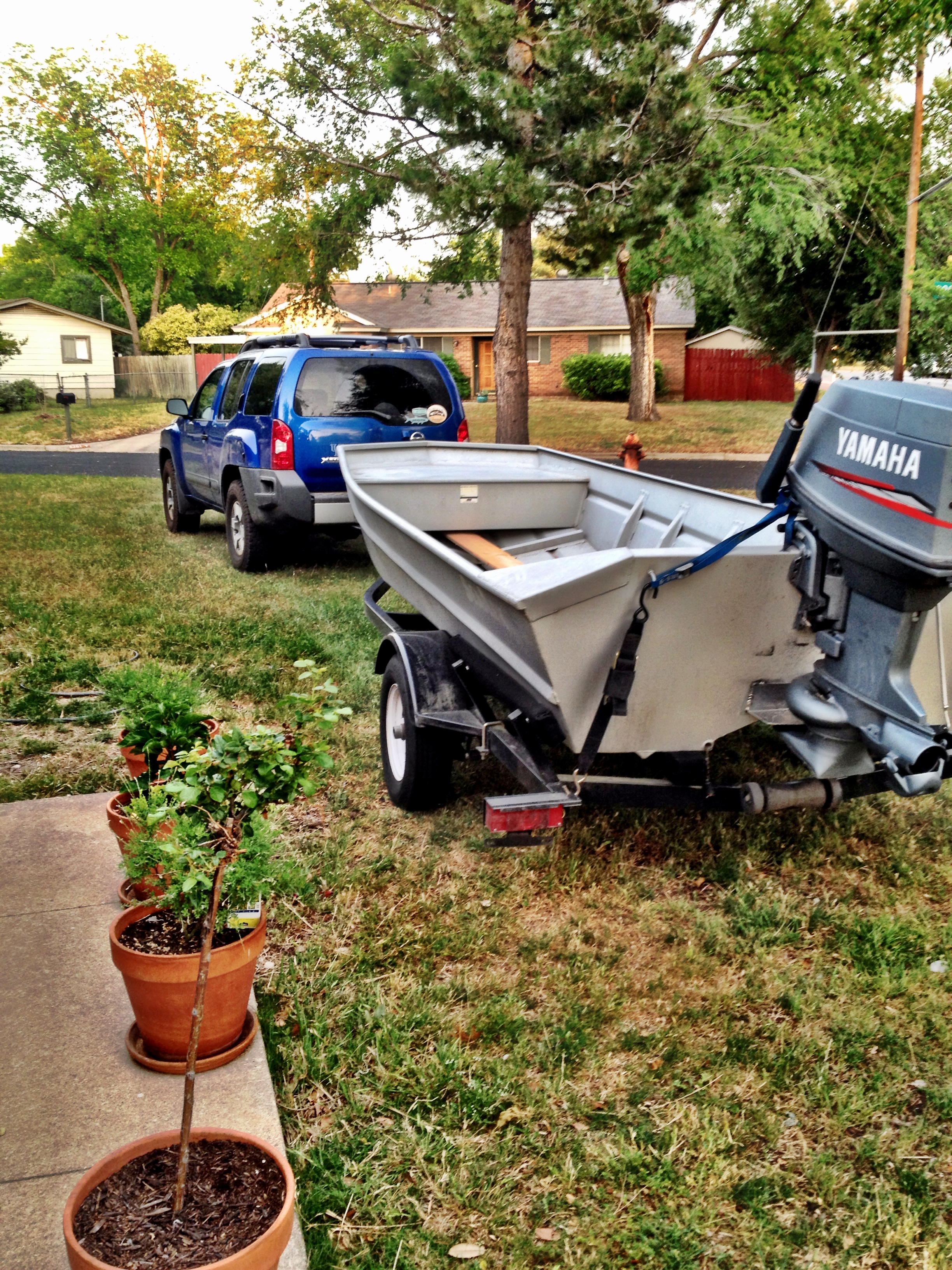
Freddy and the gang were worth every minute of the drive and their knowledge of lower-unit-less engines and boats is beyond awesome. I look forward to my return for a new engine.
Like I said in the previous post, I was going to do the exact same thing to this boat that I had done to the blue one. The SeaArk had a slight V in the Hull and I decided that needed to be addressed first. I had 4”x 4” 90 degree angle aluminium welded into the ribs to create a flat surface to build the flooring on. The flooring was Cedar planks that I sanded, epoxied, sanded, epoxied, sanded, epoxied and then sanded one more time with a final coat of spar varnish for the UV protection. I love wooden boats. My grandfather used to build them. I couldn’t not have the wood floors again, however, they are a huge pain in the ass to fit. I’m a huge fan of brute force and ignorance and in my diving days solved many problems with the idea that if a hammer wasn’t working a bigger one would. Fortunately, I was able to use the same tools my grandfather had used in his boat building; unfortunately his knowledge and experience did not magically pass through the tools as I had hoped it would. He died many years ago and I thought of him a lot while using them mostly during my many moments of frustration in not being able to beat the wood into submission with a larger hammer. The floors look great, however I can see every moment of frustration when my patience (or lack thereof) got the better of me. Guests don’t seem to mind.






Supervision a year later...
Once the side pieces were cut and fitted to the ribs of the boat the rest went pretty quickly. I also can’t help but to think of my daughter, Poppy, who supervised the last boat, she was only a few months old and was pretty easy to occupy. She’s now almost 2 and has ZERO ability to sit and keep my company.
So that’s the floors. I was, at first, going to do lean bars and knee braces however after the first couple trips I’ve found out they aren’t really needed. It’s my opinion that maybe they create a false since of security for the anglers and without them my clients seem to have a better awareness of themselves and their movements while in the boat as long as I communicate my intentions while on the oars which is better for a lot of reasons. Speaking of the oars, I also didn’t have to create the “frame” like I had before. Oar locks u-bolt directly to the gunwales, which I need to move about a foot forward (boat forward) to give the front guy a little more room.
I, of course, have a laundry list of things to do still with rod holders being the first and some sea deck type stuff for the front casting platform (it gets hot) but since the boat was new there was no need to paint and do all that other nonsense that kept me so busy on the last project. Having the blue boat in my past made doing this boat so much easier, mainly because it was new…
Please contact me with any questions that I most likely did not answer. Alvin, JD and I would be more than happy to share what we’ve learned. We all run different rigs each having their own pros and cons.
Enjoy,
AWG
Dressing for Success: Or at least being able to stay on the water without suffering from heat exhaustion.
While Alvin and JD get to escape the summer heat of Texas, the rest of us will still run trips in the usual manner, however we’re going to be a little more inclined to do “half days” as opposed to the “full day trip” focusing on the early morning and late evenings.
During the next couple months we (as guides and fisherman) expect the brutal heat while on the water and do everything we can to prepare ourselves for it. Many of us guide and have “real jobs” on the side. Our preparation for the heat of the day not only keeps us fishing and guiding but allows us to not need a day off from our ‘day on the water’ to recuperate. Clients that show up dressed for the sun and heat in my experience catch more fish because they are able to fish hard from the first cast to last cast. Sun block, while an important part of the equation, can only go so far.
While on the water whether I’m fishing or guiding during the summer, you’ll find me covered from head to toe in clothing. Big straw hats, Buff sun masks, long sleeve shirts, pants and (yes, gloves). I’ve hyperlinked what I’m wearing in the picture. It seems to counter common sense that wearing so much clothing when its 105 will help keep you cool but it does. With the advances in outdoor clothing these technical garments create a barrier from the sun and “wick” moister (perspiration) in a way that you actually sweat less and what you do sweat evaporates in a more controlled manner. I’m not going to “cut and paste” a bunch of scientific evidence into this article as it is my experience that when I dress in this manner I’m a better guide for my clients and a better husband/father when my day on the water ends and the real work starts upon getting home.
Proper hydration isn’t something you can fix the day of. We all should be drinking water on a day-to-day basis. Bottled water won’t solve a dehydration or volume depletion problem the day of and while on the water, it can actually create serious complications (wearing my paramedic hat now) by flushing out electrolytes that well, are pretty damn important to being alive. As a medic this time of year we see a lot of people that don’t drink enough water on a day to day basis only to have it bite them in the ass after a full day in the sun. I’ve seen some scary cardiac rhythms associated with dehydration in “normal enough folks” that could have been avoided by just drinking a normal amount of water during the days before and wearing appropriate clothing. Shorts and t-shirts won’t cut it.
I think we all could easily drop a small fortune on gear without out a second thought. Personally it doesn’t take much to convince me that some shiny object to replace my perfectly good “older” shiny object is a must have for an upcoming trip (I’ve got a few coming). If you look at clothing as “gear” than it’s easy to justify a couple outfits for the elements. Rationally speaking it makes absolute sense to wear clothing that will keep you in the game longer whether it’s the trip of a lifetime or an afternoon on the Lower Colorado River with us.
See ya on the water!
AWG
Jet Sled version 2
Clay loading up a rod after a successful first run
A little while ago I bought a project and I'm about to start the process again. Last time I had a lot of requests to write a build report and not having the platform to do so I used FB which was me just posting a lot of pictures with out much reporting or content. This time around I plan to use this site and as this begins to take shape write about it.
So…the last project was a Jon or John boat with an outboard jet drive. From now on I’m just going to refer to these boats as Jet-Sleds. My first Jet-Sled (V1) was a riveted Alumacraft 1432 (14 feet long and 32” on the bottom) with an old Evinrude 25 hp.
Somewhere on I-35 Fueling up on a Double Quarter pounder
I really was Just buying the engine for another boat so I really didn’t care if the boat leaked (it did) or what condition it was in (rough). If I could get it for the right price (I did) the engine wouldn't even need to run (it didn’t). I had done enough research and talked to mechanics, friends and who ever would listen. We were confidant that if it didn't run 800 bucks would fix that (it did). The boat was reborn, used for a while with friends then sold when I ruptured my Achilles tendon, which was fine, I wasn’t in love with the boat. She was a handful on the water and in no way conducive to guiding. She did however run like a scalded dog and had a unique look. I plan to fix the “handful” problem with waterline and will most likely shoot for the same look and outfit the V2 Jet-sled in the same manner.
I really enjoyed the last project and tolerated (very well I must say) all the “dude, when ya gonna be done so "WE" can go fish in it” or “dude, your OCD”. This project will most likely take longer. Jet-sled V1 came as a package deal…Boat, Motor and trailer, at present time I have none of what I need accept a clearer understanding of what worked and what didn’t, that and a line on a 40/30 Yamadog.
Poppy supervising while I work, She's 18 months now so this wont work.
Stay tuned sports fans I’m looking forward to this project and sharing it on this web sites blog
Enjoy, tight lines and shallow running boats.
Winston
I got bored. Tied up some leaders, then decided to write about it.
I first need to say that I enjoy building my own leaders. Most likely the store bought ones are better. (However, I cut those up too.) Also it gets expensive if you’re as tough on stuff as I am. Many in our community enjoy tying flies, I don’t. I enjoy building my own leaders. My nymph rig is not my own as I’ve cut and pasted what I like from others I’ve seen. It also needs to be said that Indicator Nymphing is pretty new to me. Having not grownup around tail waters I learned other ways.
My biggest issue with bobbers is that they destroy my leaders. Okay, “destroy” is probably the wrong word. My leaders seem to get all jacked-up from them though. You’ll notice a couple things in my rig. First, I run my bobber “inline” and secondly, I use a swivel. If you don’t see it, trust me it’s there. I’ll leave the swivel alone for now to let that digest. The nail knots of old fly-line secure the bobber where you want it on the butt section giving you your desired depth. However, you can make adjustments to your depth by just sliding the nail knots up and down the butt section. I’ve tried this on tapered leaders without much success. I think the declining diameter of the butt section allows the nail knots to slip. For comparison, this leader recipe will be pretty darn close to an Orvis 9’ 5x knotless tapered leader.
I use 3-4 feet of 30lb MAXIMA Ultragreen Mono (0.22”) for my butt section. MAXIMA is great stuff and has the stiffness required for a butt section. I’m pretty diligent on my lengths, for various and complicated reasons, so when I say 3-4 feet it is 3 feet or 4. I cut a longer section to work with and thread the bobber on inline. Then with old fly line tie in 2 nail knots on either side. Make them good and make them tight. I do 5 turns in mine. After you’re done with that, tie your perfection loop in one end and cut down your leaders butt section to the desired length keeping in mind the knot. (I’m a perfectionist and, yes, I will start over if it’s an inch off.)
For my mid section, I use Berkley VANISH Fluorocarbon. It’s supple and a good transition to the tip. With a 30lb butt section I’ll use 10lb test (0.11”) tied in with an improved blood knot. Capt. Dave Hunt, a tarpon guide whom I’ve fished with, instilled in me the importance of choosing the right knot for the right application, which I appreciate. Because of the drop in diameter between the two, I feel the improved is a better choice but I could be wrong. To finish off the mid section I use a swivel.
If you’ve never used a swivel or a tippet ring you should give it a shot. I am constantly breaking off, knotting up, cutting back…etc…etc… my tip section. The swivel helps with the cold finger tie-in if you have to completely redo your flies because of a tree, besides the extra little weight is good and I promise the fish don’t care. The business end of the rig is completely up to you.
For my tip section, I will tie to the swivel 1-2 feet of 4lb Berkley VANISH (0.009”) then my Frogs Hair Tippet 5x with a good ole’ double surgeons knot. I like the Frogs Hair because I get a deal on it and I’m nerdy. The gamma technology and their proprietary process is fun to read about and just like the Vanish it is made in the USA.
So there ya have it! Take it or leave it, use it or don’t. Just go fishing.
Tight lines
W
What's working?
Lately, a lot of folks are asking me the same question, "what flies are working?" We are keeping it simple throwing crawfish patterns in black and brown as well as Clouser Minnows in chartreuse and white. Also, we did manage to catch a few nice fish on poppers this past week when the weather and water temps permitted. Pretty basic patterns are the ticket for winter bass on the Colorado River.
My new favorite crawfish pattern is the Lead-eyed Double Bunny Crawfish (AKA "DB Craw") tied on 1/0 — 2X Mustad Signature hook. The two most productive colors are black and brown/orange. As predicted all of my crawfish patterns are tied with with a 25# mono (Hard Mason) weed-guard.
In the winter we get a really good run of white bass mixed in with our usual catches of Guadalupe and large mouth bass. We have yet to find a more productive fly for white bass than the Clouser Minnow. The best color has been chartreuse and white Clousers using 1/32 oz. on lead-eyes tied on a 1/0 — 2X Mustad Signature hook with a 25# mono (Hard Mason) weed-guard.
Winter bass fishing is great right now so grab a handful of crawfish and Clouser patterns and your favorite 6-weight the bass are ready and willing!
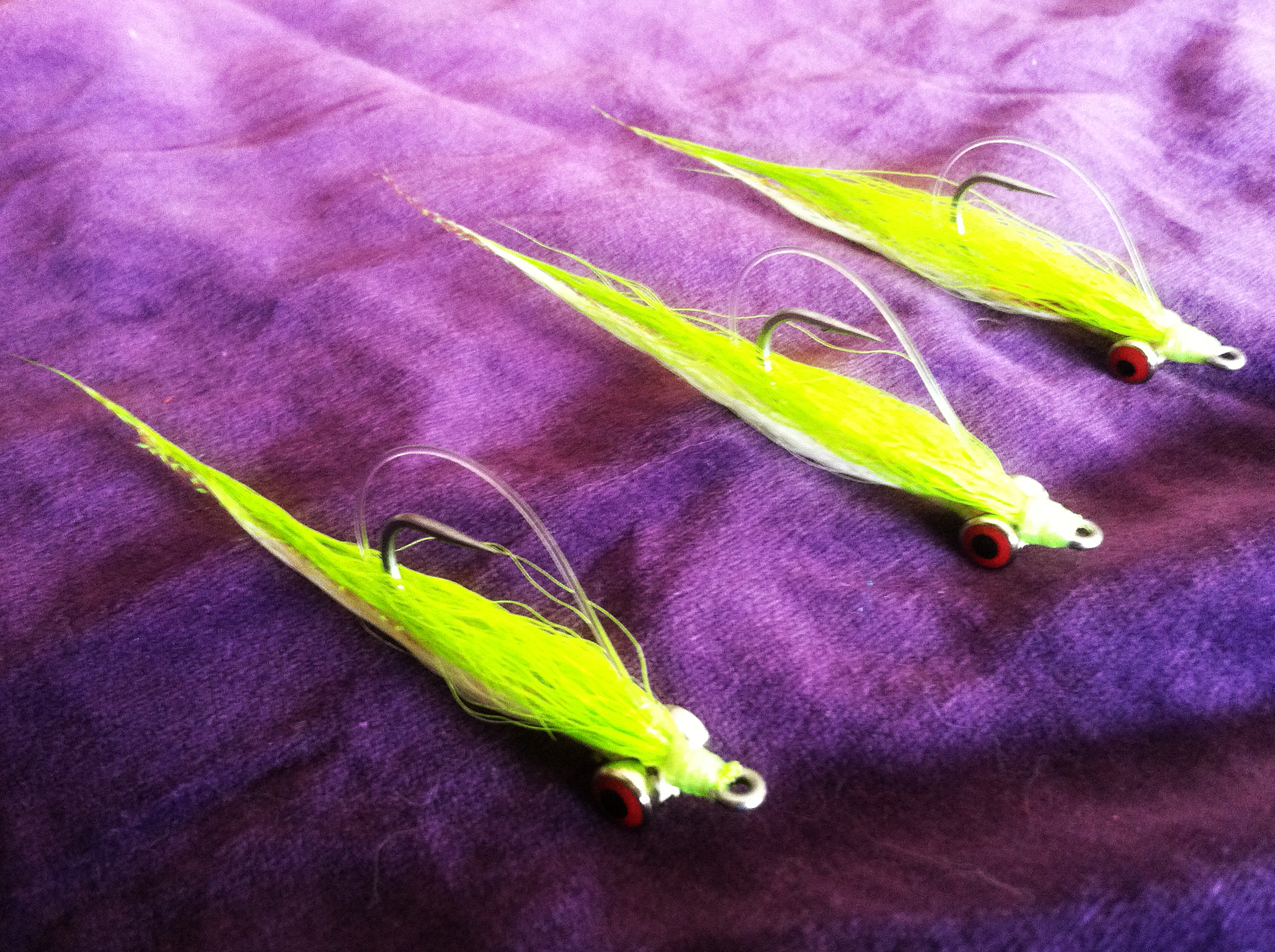
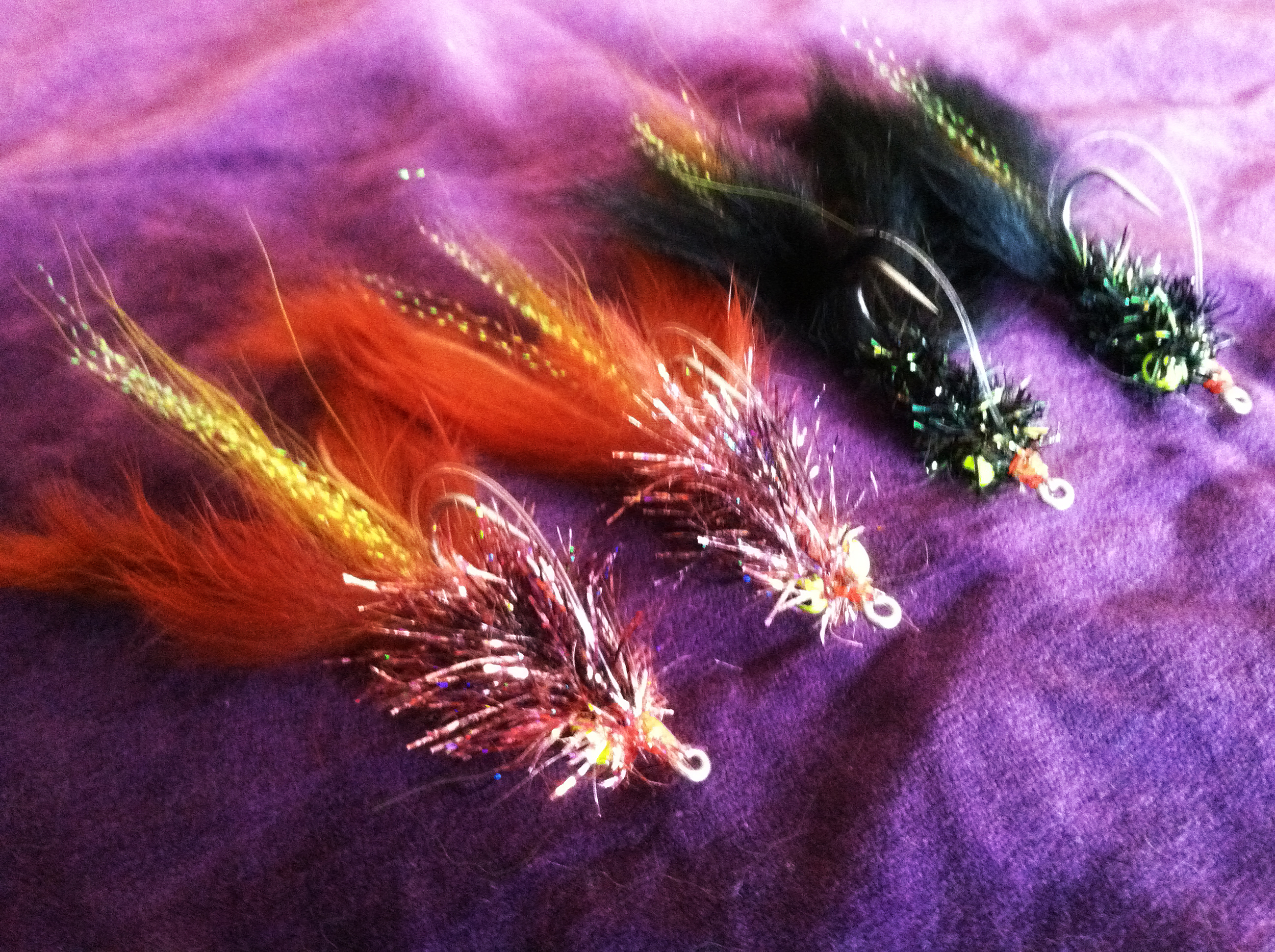
The Bench Warmer
No one wants to be called a “bench warmer”, but the truth is, every team relies on crucial players that spend most of their time on the bench. So, what does this have to do with fly fishing? As fishing guides we are all very reliant on fly boxes stuffed full of well-crafted flies, which have to be tied by someone with special skills manning a fly tying “bench”. For us a bench warmer is someone who can spend hour after hour at the tying bench cranking out flies.
Over the course of a season we go through a ton of flies and we can’t physically—or mentally—handle tying flies day-in and day-out. We are talking about hundreds of flies, some of which are difficult and time consuming to tie and quite frankly, beyond our skill set. Additionally, many of our favorite patterns are custom, meaning that they vary greatly from the flies you can find in your local fly shop or online retailer. In almost all cases our flies need to be more durable, have specific color variations, and other incorporate finishes like heavy weighted eyes and stout weed guards.
For the last couple of years I kept seeing photos and reading post from a group of hardcore smallmouth and pike fisherman in the northeast who were catching nice fish on beautiful flies tied by this crazy bearded and tattooed fly tier named Pat Cohen. Sure enough I checked out Pat’s website and friended him on Facebook and it didn’t take long for me to realize that Pat has some mad tying skills that I will never master.
Pat not only speaks bass fishing, he is also a diehard bass fisherman. It shows in his flies, which reflect his vast knowledge of bass, where they hide, what they eat, and most importantly, what they can be fooled by. I am excited that Pat has offered to work with me and All Water Guides to further develop a his already incredible line of crawfish, baitfish, popper and diver patterns. With our year-round bass fishery here in Texas—our northern brethren don’t get to bass fish all winter like us—and plenty of huge river bass we have the ability to field test new prototypes and refine existing patterns giving Pat “real-time” data all year long.
I spent the weekend testing some custom divers Pat recently tied for me. Despite poor water visibility, cold temperatures and heavy weekend fishing pressure these divers moved some huge bass. See for your self how beautiful Pat’s flies are—follow him on Facebook or better yet visit his website and order flies from him direct.
Imagine this. Pat ties every fly himself—using the absolute best materials—and when you call him on the phone you actually get to speak to Pat. As far as we are concerned a bench warmer is a good thing and when Pat Cohen is at his bench that means we can all be catching fish.
Jet Boatin' Road Trip
Jeff Davis and I took a little road trip to southern Missouri the other day. The reason was to pick up a jet drive outboard for my new Hog Island Skiff. We kept getting asked why we were driving so far to buy a boat motor.
Well you see this is no ordinary boat motor. Outboard jets are not real common in this part of the country. Anglers in Arkansas and Missouri have used jet powered boats for years to access shallow rocky sections of their rivers that conventional prop driven boats would never survive in.
On rivers where there is little access or long distances between put ins and takeouts, a jet boat can open up miles of seldom fished water. When floating under oar or paddle power fishing a 6 mile section of the river can take all day. With the option to use the engine we can cover 12 to 20 miles of water with no problem. Because we are in no hurry to get downstream we can take our time in the best water and motor through the less productive sections.







